
ACKNOWLEDGED BY THE










ACKNOWLEDGED BY THE









One of the things we love to The National Collision Repairer magazine is tell stories.
There is always plenty of news to focus on and endless issues which are constantly changing in an automotive industry that is undergoing almost unprecedented change but there is always time as well to stop and tell stories from the industry.
Some of these stories come from industry veterans and some from those who are just beginning their journey. What we know is there are plenty of quiet achievers in this industry who often spend a lifetime knuckling down and getting the job done, without the recognition they sometimes deserve. Part of the reasoning behind NCR ’s Lifetime Achievement Awards is to make sure those, who are often the backbone of the industry, are celebrated with fitting pomp and circumstance. But that award is only once a year and we feel there are so many more opportunities to tell great stories about the industry, whether it is a thriving and innovative business or a young player showing the characteristics that highlight what a great future the industry has.
In this issue we were lucky enough to speak to Shawn Buie from Drive Group in Kingston, Brisbane. Like so many young people Shawn has a passion for cars, so much so that he has even set up a sideline pursuit to further focus his interests and skills. All this is commendable enough, but it is the obstacles he has had to overcome which make his story inspiring and a worthy subject for our Future Leaders section. These are always great stories to tell.
And on the subject of inspiring stories, Capricorn’s Rising Stars award unearths some wonderful industry case studies
whose details are always worth taking the time to tell. The WA cooperative, that is enjoying its 50th year and fast approaching 30,0000 members, is a model in how to keep serving its members. But it is also an organisation that is acutely conscious of the industry it serves and the way the automotive industry perceives itself. Part of helping to shape that perception is celebrating people within the industry. With this award it highlights the young people who have the qualities and enthusiasm that make the industry great.
The worthy winner of this year’s Rising Stars award is Megan Toia, who although she is not directly involved in collision repair, is an apprentice in the automotive trade whose story is too good to pass over. Megan’s commitment at the start of her career to overcoming obstacles is exemplary, as is her passion for learning. But another element in her story that is worth promoting to the whole repair industry is just how ready these young people are to thrive when they have a supportive workplace and family. In many ways, this is also an award for her family and for Badgingarra Motors. Having this backup is about a lot more than luck. It is a story of patience and generosity. These are the qualities that are the key foundations for growth, both for Megan as an individual and for any business which wishes to thrive. We believe in these qualities at NCR and look forward to continue celebrating them wherever they come from in the industry.
Which leads me to an invitation, if you know someone in the collision repair industry who is particularly deserving of attention or has a great story to tell, then we are always happy to listen. This may be that opportunity to give these people or businesses the attention they deserve. And that is good for the industry.
Feel free to email me at eugne.duffy@primecreative.com.au
Eugene Duffy Editor
The National Collision Repairer


Global coatings giant BASF has used one of the highest profile auto events in the world to launch its latest innovations in recycling and sustainable products.
BASF has announced its first ChemCycling® products that utilise recycled waste tyres at the world’s leading international trade fair for the automotive aftermarket, Automechanika 2024, held in Frankfurt, Germany in September.
The product lines, manufactured using recycled materials will be marketed under BASF’s premium brands Glasurit and R-M and aim to boost body shop efficiency and productivity, contribute to the circular economy and reduce CO2 emissions.
The advent of a smaller footprint and greater efficiency will be exciting news for workshops determined to incorporate sustainability into their long-term business plans.
BASF Senior Vice President, Global Automotive Refinish Coatings Chris Titmarsh says one of the substantial
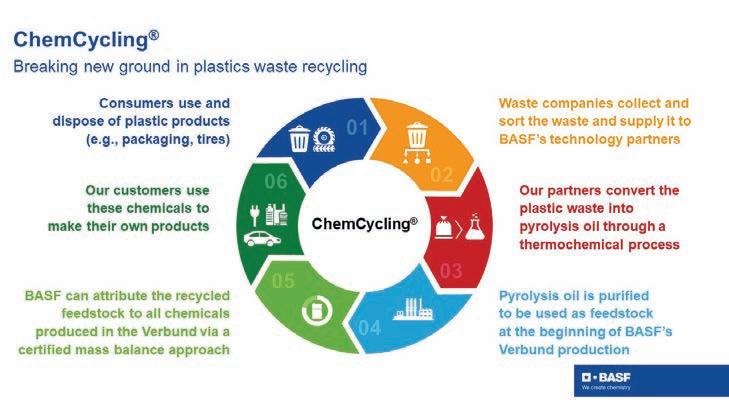
pushing what’s possible, empowering body shops to lead the change with sustainable technologies that are unique to the market,” Titmarsh says.
“With our exclusive ChemCycling, our vision is to support a circular economy by reducing the use of fossil raw materials, minimising waste and cutting CO2 emissions in the value chain.
“We’re making a difference with our new products, replacing a share
BASF Coatings’ Glasurit AraClass A-C-24 Eco Balance and R-M Race Finish-R eSense clearcoats are the first automotive refinish products that utilise this technology, delivering benefits to both body shops and the environment, BASF notes.
For the workshop, the clearcoats’ drying speed allows for fast processing, with the coating drying in just 20 minutes at 40ºC.
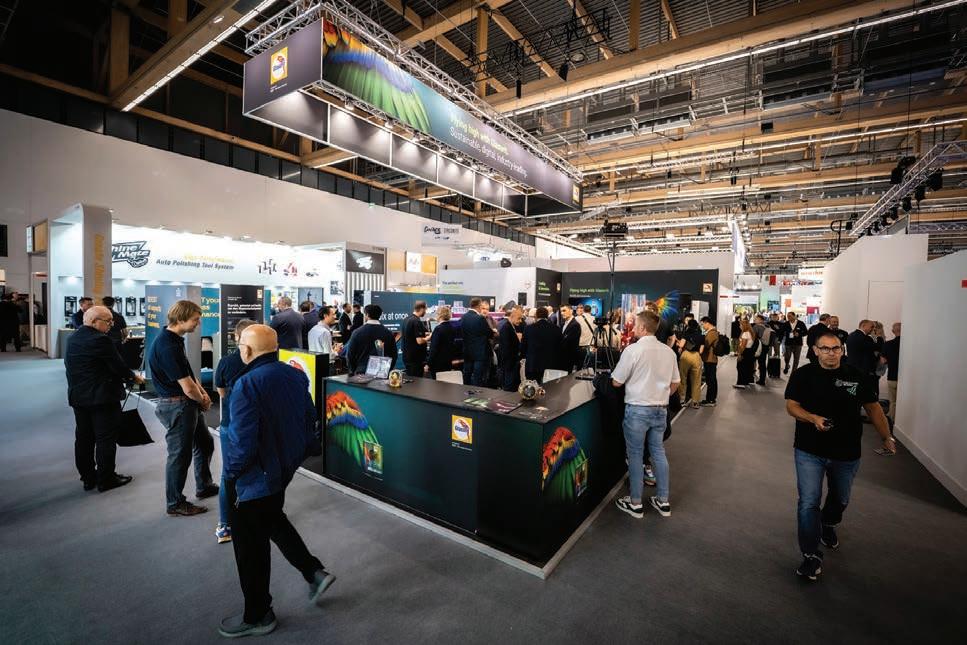
By reducing drying time, energy consumption is significantly lowered, resulting in improved efficiency and reduced environmental impact.
This feature is particularly advantageous for electric vehicles, as it minimises their exposure to excessive heat.
BASF will also expand its range of Biomass Balance products. New mixing clears based on BASF’s biomass balance approach have been added to the waterborne basecoat series of Glasurit 100 Line and R-M AGILIS, both of which already offer the lowest VOC content below 250 g/L in the industry.
The new mixing clears now reduce CO2 emissions by up to 50 per cent.
For more information go to glasurit.com/en-int/sustainability

Creating positive change for your business and the environment.

Taking sustainable action can make a real difference to your bodyshop. In fact, those who’ve already chosen our sustainable products are now using less materials, conserving resources, saving money and more importantly, protecting the environment. Contact us and find out how you can switch your bodyshop to eco-friendly products today.

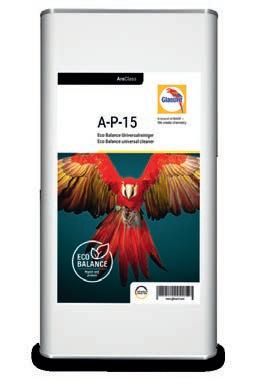

A well-established name in the industry, Car-O-Liner products are known for being reliable, dynamic and efficient.
Car-O-Liner offers many workshop solutions that ensures a broad range of equipment to suit a diverse scope of workshop requirements and needs.
Car-O-Liner’s services don’t stop at the equipment, they also provide customer support services for any issues that may arise.
The CDR1 Workstation, the CR200, and the Speed 3T are three pieces of equipment that will boost your workshop’s functionality and pace.
The relatively compact size and small footprint of the CDR1 workstation is ideal for all workshops doing cosmetic

The CDR™1 is a value-packed repair cart that allows technicians to quickly and efficiently provide professional repairs of small to medium autobody damage.
These quick cosmetic collision repairs generate good margins, faster cycle times and a decreased need for investments in expensive, heavy equipment.
Colour-coded tools are neatly arranged in the workstation which can be rolled around the workshop as needed.
There are also three versions of the CDR1 to adapt to a workshop’s needs with the basic unit including the workstation, the CR235 Combi Spotter and two drawers for steel and aluminium.
The advanced kit adds a drawer for glue, while the Master Kit adds a drawer for Holding and another for Push-Pull, to make up an all-inone workstation to cover almost all cosmetic jobs in the workshop.
The CR™200 spotter uses a unique short cycle welding process that is an effective for both aluminium and steel automotive bodywork. The process is especially designed for welding screws, pins and accessories such as washers and keys.
The CR™200 boosts efficiency for quick dent repairs and allows vehicles to move quickly through the repair process. The CR™200 can increase shop productivity and profitability.

3T are designed to bring versatility, reliability and efficiency to your workshop. With two types of installation, aboveground or flush mounted, they can provide a dynamic system for light service to damage repair.
The Speed 3T and the Speed 3T Plus are two light weight work benches, perfect for speeding up the repair process. Carrying a weight of up to 3 tons, the equipment is made to withstand any medium and cosmetic damage repair.
The bench system is an easy assemble of the convenient draw aligner, which can be rotated 180 degrees around the platform at one end and can be tilted 90 degrees horizontally.
The Speed 3T Plus will give you the boost your workshop needs. With longer bench space and room for two draw aligners, one at either end, the bench could solve efficiency issues.
To learn more, visit www.car-o-liner.com.au.













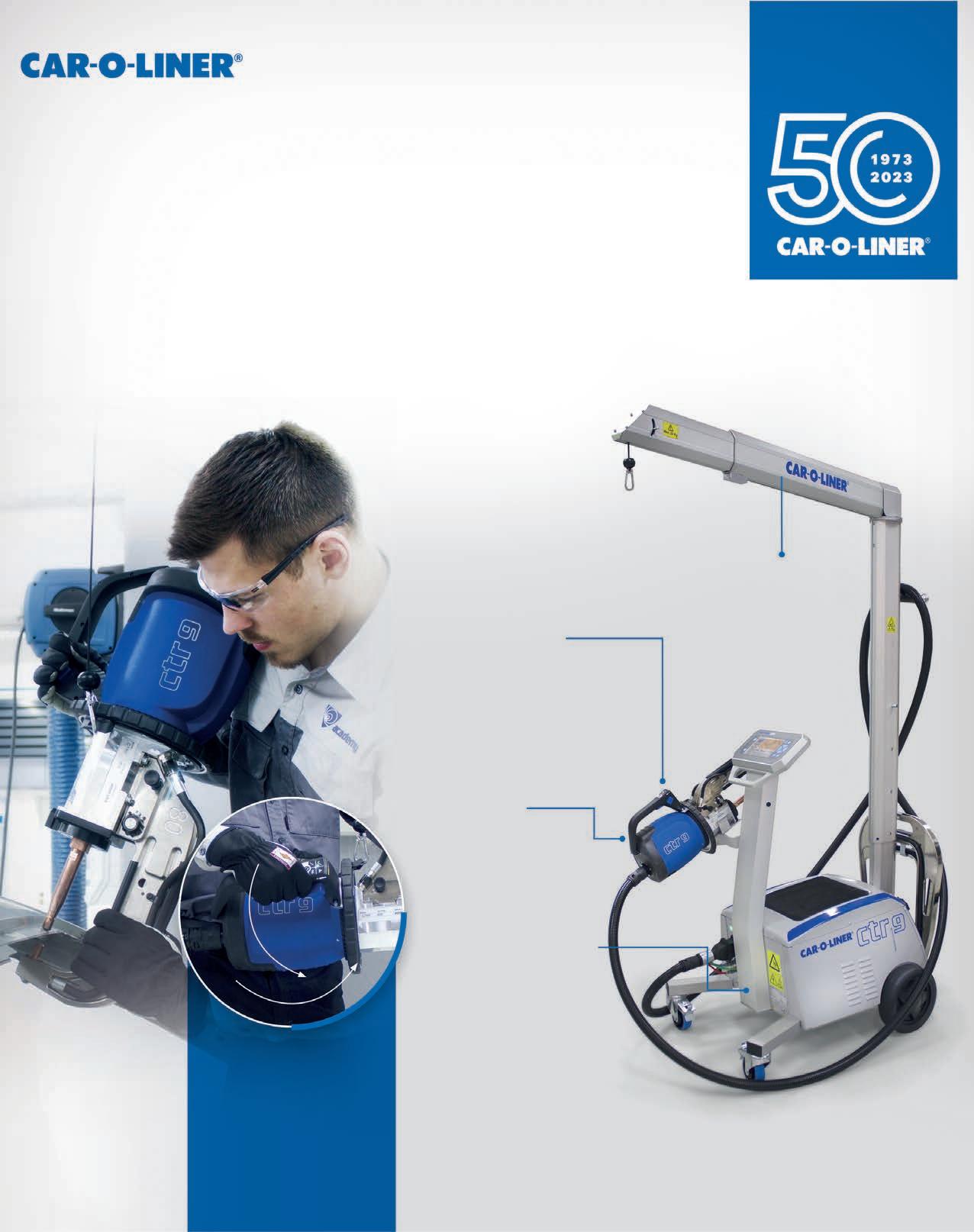





pays special homage to the global movement with a beautifully crafted, precision engineered body covered in sophisticated street art motifs and offset with black accented nozzle and gun controls.
This strictly limited-edition spray gun combines the energy and creativity of street art with the outstanding quality that has made SATA a global industry leader.
What’s beneath the surface
Best of all, behind the standout graphics you will find all the high value features that have made the regular SATAjet X 5500 a market favourite, including the unique X-Nozzle System.
This innovative range of nozzle options makes it easy to perfectly tune this spray gun to suit a painter’s personal spraying preferences, the paint brand being used and application conditions that can range from a cold, dry Melbourne to a hot, humid North Queensland.
A spray gun with street cred and then some….
Featuring creative and expressive street art images, SATA’s latest special edition spray gun makes an eye-catching statement in the paint shop or on display in a collector’s display cabinet. These days, you can find impressive examples of uber cool street art pretty much everywhere around the world, including on the latest SATA limited edition spray gun, the SATAjet X 5500 Street Art.
Originally created in the urban landscapes of large cities, many artists have turned street art into a legitimate worldwide art movement that has become famous for sending and immortalising social and political messages in the form of extraordinary murals.
The SATAjet X 5500 Street Art
The SATAjet X 5500 Street Art is available in your choice of RP or HVLP technology, as well as selected nozzle sizes, and the popular digital version with an extremely handy air pressure readout integrated into the gun handle.
Being a special edition also means it is a time-limited promotion available from your SATA distributor while stocks last.
Whether you plan to enjoy it every day in the spray booth or add it to your gun collection display cabinet as a piece of awesome artwork, SATA recommends spray technicians get in quickly and place orders ASAP to reserve a SATAjet X 5500 Street Art and avoid disappointment.
For more information go to sata.com or speak to a SATA distributor.
U-pol’s High #5 is a 1K high-performance primer designed for compatibility with most solvent and waterborne paint systems, making it ideal for spot and small component priming applications. Available in Grey and White, High #5 meets VOC compliance and adheres to safety guidelines for use outside the spray booth.
Its performance rivals that of a 2K primer applied with an HVLP spray gun, but without the associated hassle.
Efficiency and Convenience: High #5 is faster, requires less masking, has no pot life, and significantly reduces material waste and cleanup. Its exceptional build and outstanding adhesion set it apart from industry competitors, making it the perfect product for SMART repair applications.
Versatile Bonding: High #5 bonds directly
to bare steel, aluminium, galvanized steel, and most plastics, including flexible bumper components.
It comes with two spray nozzles to maximize performance:
• High output round tip: Generates approximately 2 mm depth per coat.
• Flat tip: Produces a 4-inch-wide fan pattern with 1.1 mm per coat, offering finer atomization for better control over larger areas.
Rapid Drying: The fast-drying resin system reduces shrinkage and easily fills 180 grit and finer sand scratches in just one to two coats.
With a flash time of just 5 minutes, rapid recoating is possible. After drying, you can wet sand with 600-800 grit sandpaper or dry sand with 400-600 grit sandpaper.
High #5 is simply one of the highest-

The High #5 sets new standards for high-performance primers.
performing high-build primers available, making it an essential part of any SMART repair toolkit. Its superior performance and ease of use ensure that it supports spot repairs effectively and efficiently.
For further information and to locate your nearest stockist contact U-pol’s technical customer support team on (02) 4731 2655 or email sales@u-pol.com.au
































Safety and comfort are driving innovation in cars at an unprecedented rate. But where ADAS systems were once the domain of luxury or European cars, repairers can expect them on almost any new car that comes into the workshop. This means businesses need to be ready for calibration as a regular part of the workflow. Logicar has a workshop solution that may be the very thing businesses are looking for.
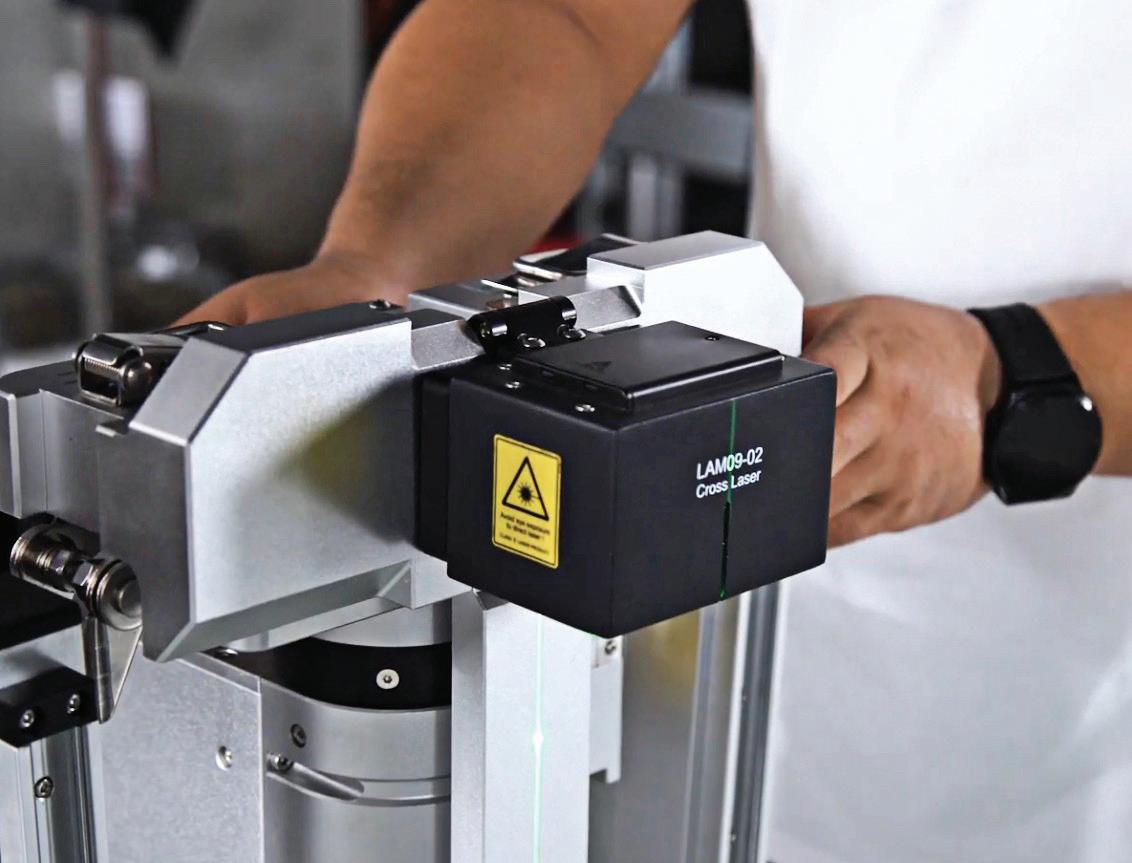
repair workshop, but Logicar’s Thinkcar ADAS calibration kit has focused on functionality to ensure it meets the demands of modern technology but is also easy to use.
Logicar has taken the best of new automotive technology and adapted it into a calibration system that is flexible, accurate and easy to install.
Safety first Collision repairers have a growing
calibrations of cameras, radars and sensors on a modern vehicle are an essential part of the repair process. These ensure the onboard devices continue to collect the precise data and provide exact warnings to the braking and steering functions of ADAS systems.
The Thinkcar ADAS calibration kit aims to give repair workshops this capability and continue to serve customers with a level of expertise that develops trust and client satisfaction.
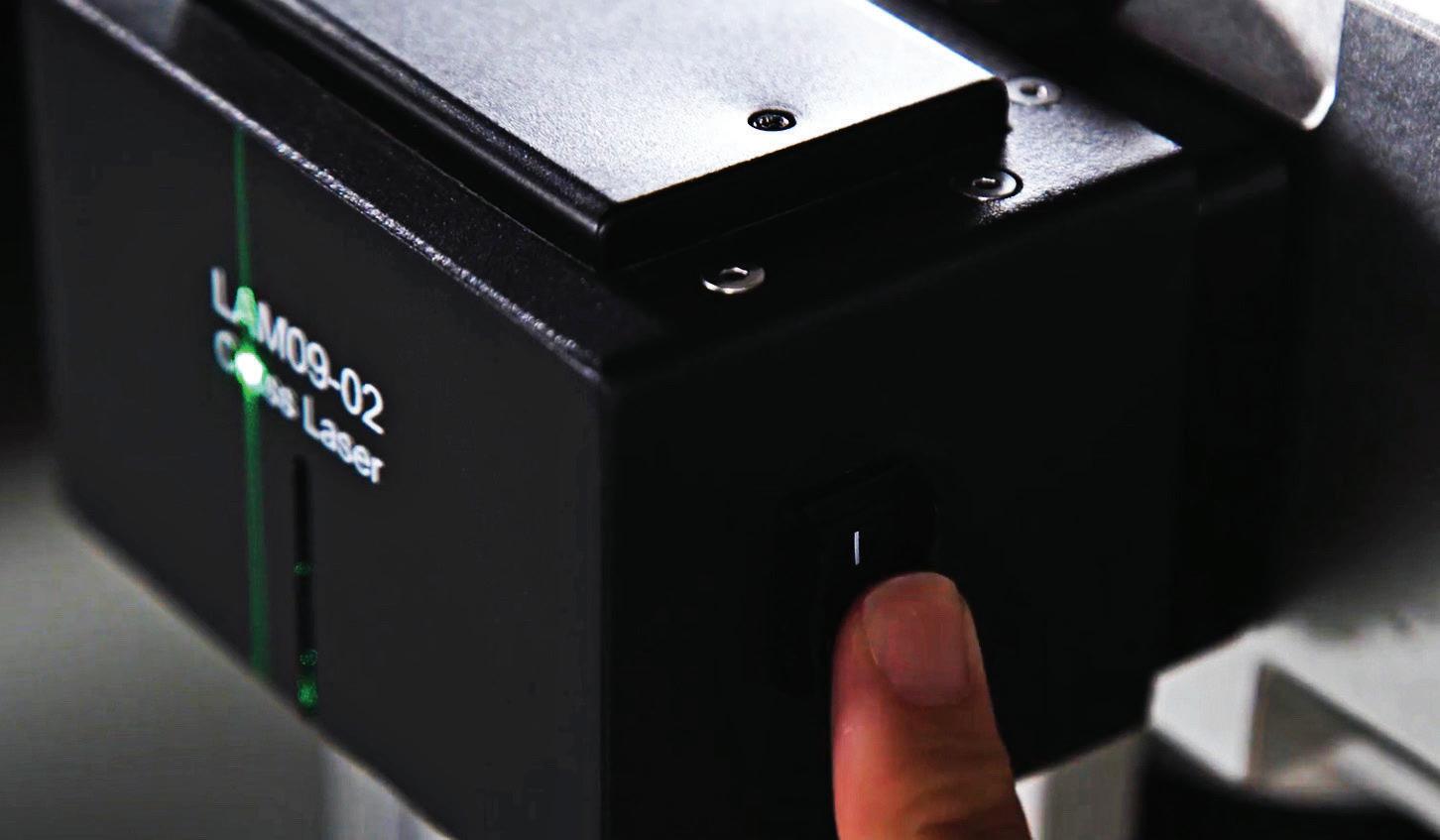
The Thinkcar kit is designed for workshops to be able to calibrate a wide range of safety systems that are becoming prevalent on modern vehicles including Lane Departure Warning, Adaptive Cruise Control, 360 Panoramic Monitoring, Rear Collision Warning and Blind Spot Monitoring. In order to ensure the ongoing safety of these systems on the road after repairs Thinkcar has also paid close attention to the accuracy of its system. It uses five-line laser and cross


at the front of the vehicle, leaving the technician with the help of the software to begin the calibration.
The Thinkcar ADAS Calibration kit is a fully portable device that can be folded up for storage or transportation, freeing up valuable space in the workshop when not in use.
It also features universal calibration components and has a range of different elements that can be assembled and added to calibrate different car models.
It is also compatible with the full
range of Thinktool diagnostic devices to meet the daily calibration need of auto repair shop.
Logicar also has an industry reputation for backing up their equipment with ongoing technical support and training, from certified and authorised ADAS Technicians. The support staff can work with customers through issues and diagnoses to ensure calibrations are successful.
This further adds to workshop flexibility and potential business profitability by keeping calibration services in-house. It can also avoid further delays in key-to-key times on repairs and greater enhance customer satisfaction.
The system has full software support that covers a comprehensive range of vehicles covering 98 per cent of the modern fleet including popular makes such as Toyota, Ford, Holden Mazda, Nissan and Subaru, right through to luxury manufacturers such as Ferrari, Rolls Royce, Aston Martin and Mercedes Benz.
It is also up to date with a range of new Asian vehicles appearing on the market including Proton, Tata, Mahindra, Maruti, Ssangyong, Perodua, Geely.
For more information go to logicar. com.au or watch the full demonstration video on Youtube
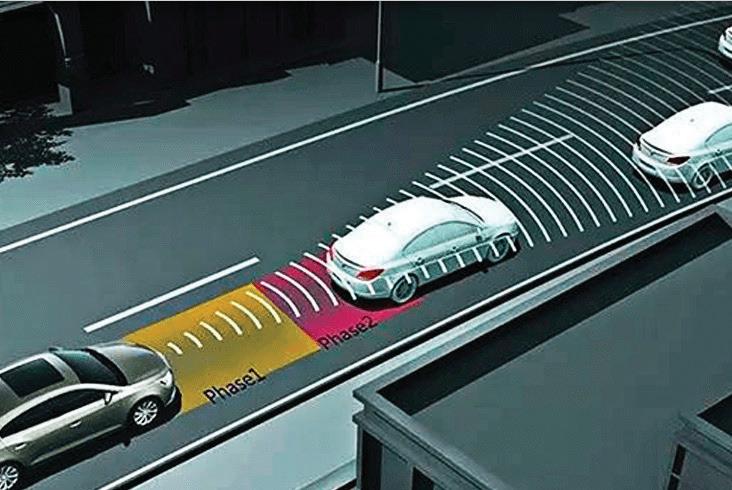
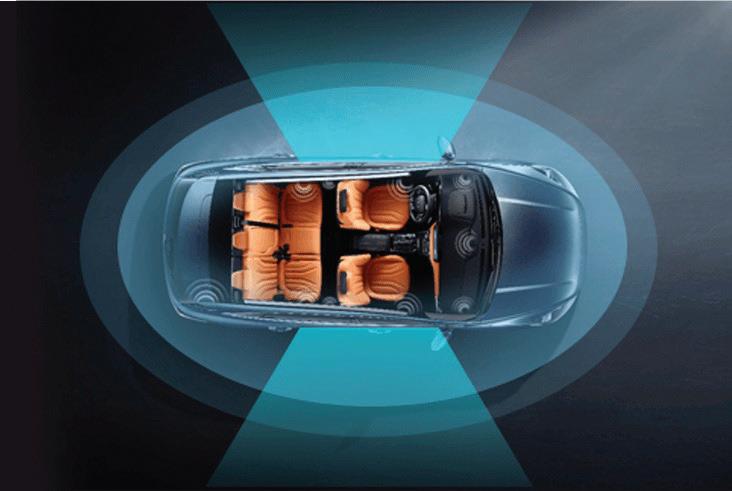
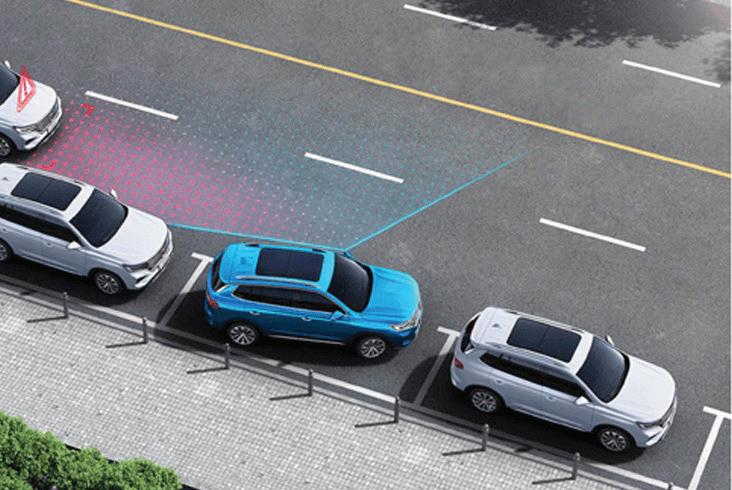
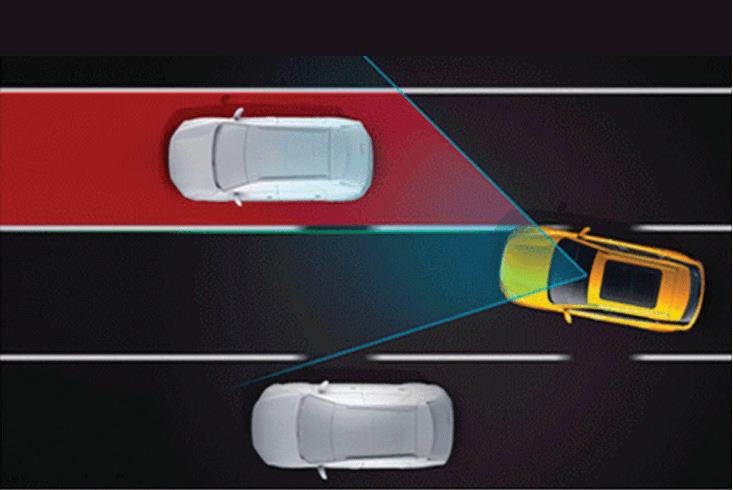

Panels know how to successfully break new ground.
The Iacobuccis define success as continuous growth, learning, and improvement as a team, and it is safe to say, that so far, it has worked in
it’s a collective effort. Every member of our team plays a role in our success, and as they grow and develop, so does the business,” Clarissa says.
“We wouldn’t be where we are today without the incredible team we have. Their dedication and progress is what truly defines our success.”
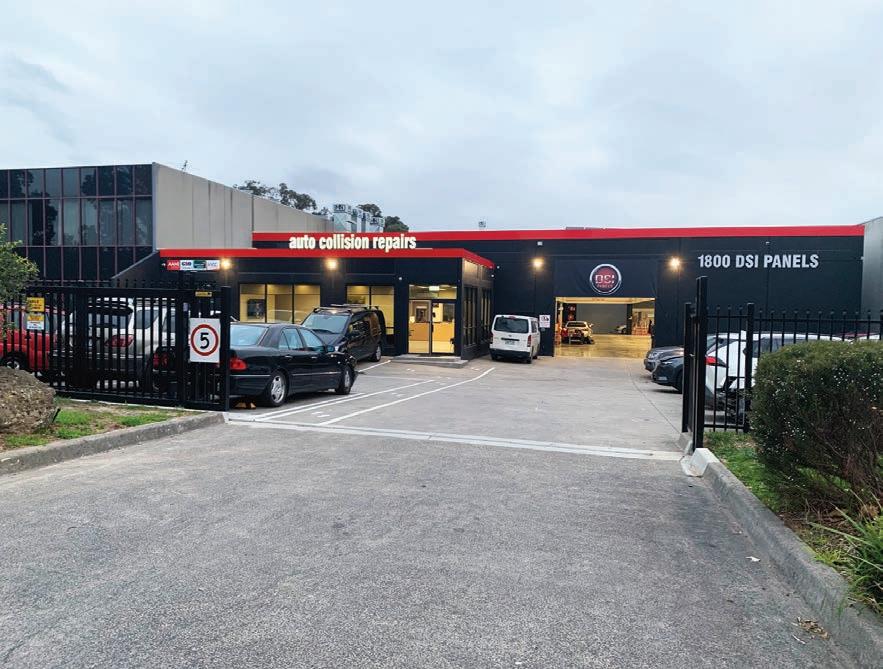
David Iacobucci’s parents, Don and Silvana, started DSI Panels over 40 years ago with a workshop in Box Hill North. In 1998, DSI Panels moved to its current location in Blackburn.
Wanting to follow in his family’s footsteps, David began his panel beating career in 1999 at his parent’s workshop. David moved quickly through the ranks, and by 2006, he had purchased half the business from
In 2014, David and Clarissa bought the remaining half of the business from Don
to four factories in Blackburn, a large purpose-built factory in Croydon South, and most recently, the acquisition of four adjoining factories in Lilydale, making us the largest panel shop in the Yarra Valley,” Clarissa says.
“It’s been quite a journey, and we’re grateful for all the support we’ve received along the way. That says, we never stop looking— the next expansion could be just around the corner!”
Working as a family unit has meant that David and Clarissa can openly communicate and get straight to the source of the challenge or issue. United by the same goal, the discussions surrounding improvement and growth are underpinned by openness and candidness.
“While we might not always have a filter in our discussions, honesty has shaped the personality and culture we’ve built across the DSI Panels locations,” Clarissa says.

David takes care of the front-end responsibilities, working with insurance companies and suppliers to get the best deals. David also steps in to help with quotes, parts, and answering day-to-day questions from the team.
“Together, we do our best to keep things running smoothly for both staff and customers,” Clarissa says.
Until marrying David, Clarissa had zero experience in the collision repair industry. Like many, Clarissa had preconceived ideas about the industry, but when she began her work in the
“I was able to bring in experience from my previous work which added more structure to the way we operate,” Clarissa says.
After a decade with the thriving Blackburn workshop, DSI Panels were faced with a difficult choice in an uncertain economy. Their choice was to either expand or plateau.
“We are driven by our core values and a desire to keep moving forward. So, we chose growth,” Clarissa says.
The expansion process was a time
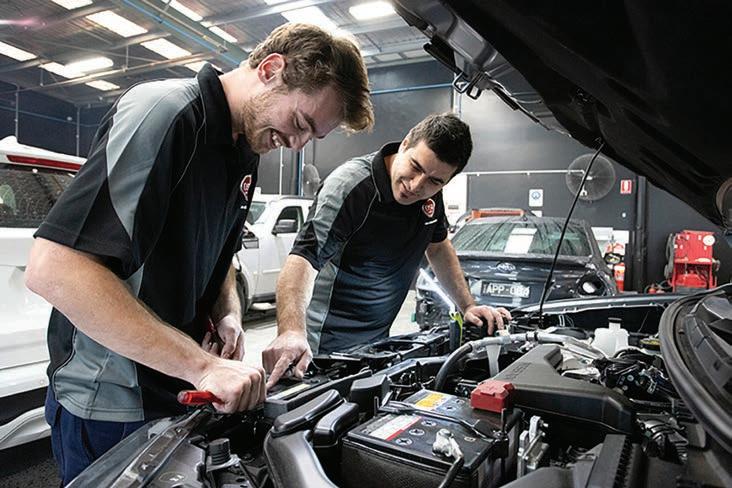
end result even more satisfying.”
The Croydon workshop opened in 2018, and it has been a highlight in the Iacobuccis’ journey so far.
“The opening of our Croydon branch stands out as one of the most memorable moments for us. It was our second location and really marked the beginning of our major growth,” Clarissa says.
“Watching that shop grow into what it is today, with multiple awards and a strong, dedicated team, has been incredibly rewarding. We couldn’t be happier with how far it has come.”
The Iacobuccis lead DSI Panels with an innovative eye that is strengthened by the ability to adapt and grow.
“We’re committed to discussing, formalising, and continuously finetuning our processes. We gather input from everyone involved to ensure that our practices are as streamlined as possible,” Clarissa says.
Having a consistent approach throughout all levels and areas of the office and workshop has allowed DSI Panels to continue its growth and expansion.
“For instance, we have a standardised list of photos needed at various stages—
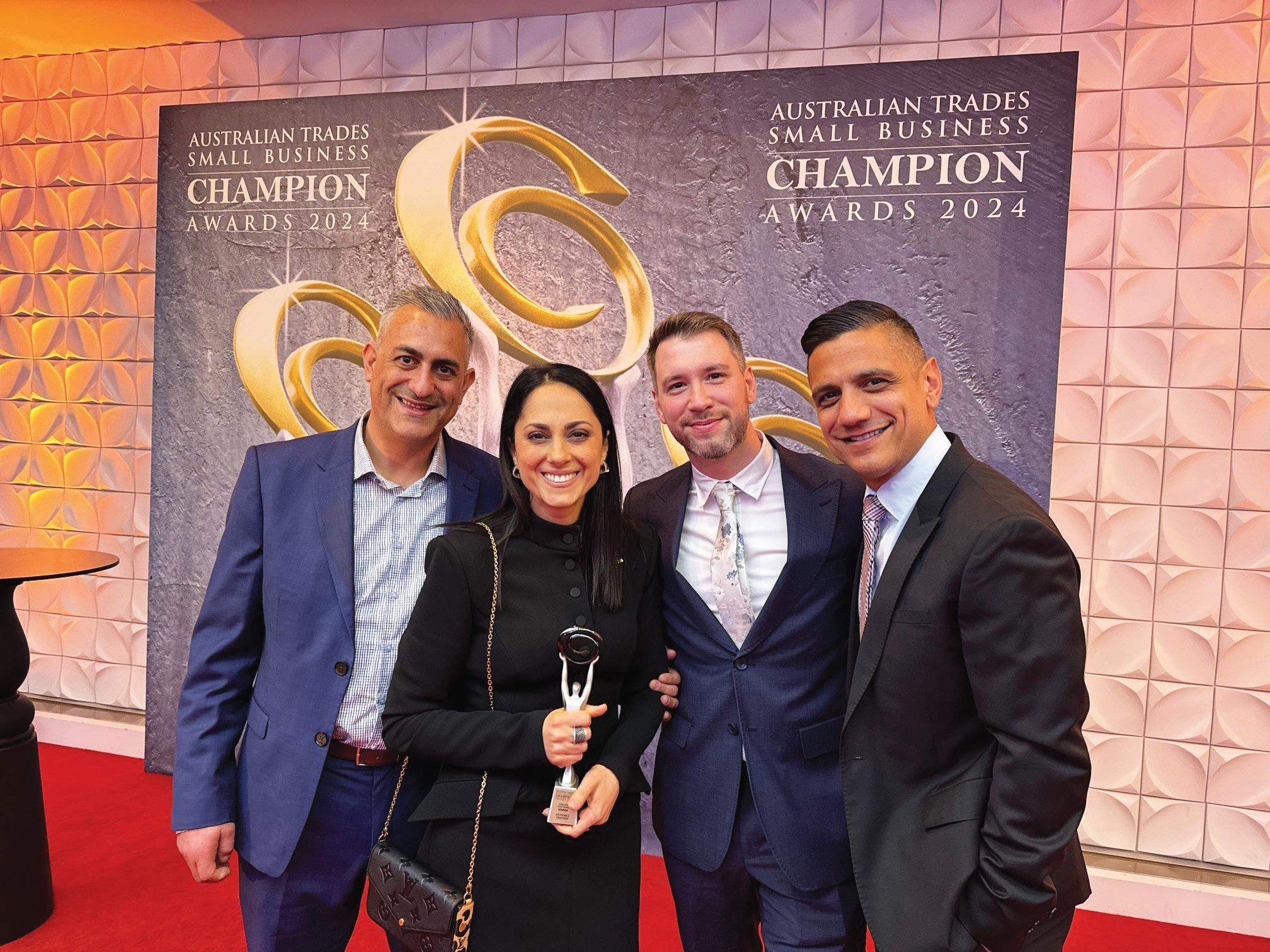
quotes, drop-offs, progress updates, and hand-overs. This simple yet effective practice helps minimise potential issues and keeps everyone on the same page,” Clarissa says.
“It’s a great example of how small, consistent improvements can make a big difference, and it’s something that everyone contributes to.”
All repair shops are facing numerous
changing contracts, there’s been added pressure on our operations. However, we’ve focused on understanding our limits and setting clear boundaries regarding the number of cars we can handle at any given time. Learning to say ‘no’ when necessary has been crucial.”
At DSI Panels, keeping a happy and cohesive workplace is an expectation that they constantly work to uphold.
who align with our values. We focus on finding the right fit for our team rather than just filling positions,” Clarissa says.
DSI Panels recognises the shift in attittudes towards the work/llife balance, particulary after the pandemic.
“We offer flexible working arrangements, including options for 4 or 5-day weeks, part-time or casual roles, and the ability to make up time for personal appointments. This flexibility helps our staff balance work and personal commitments,” Clarissa says.
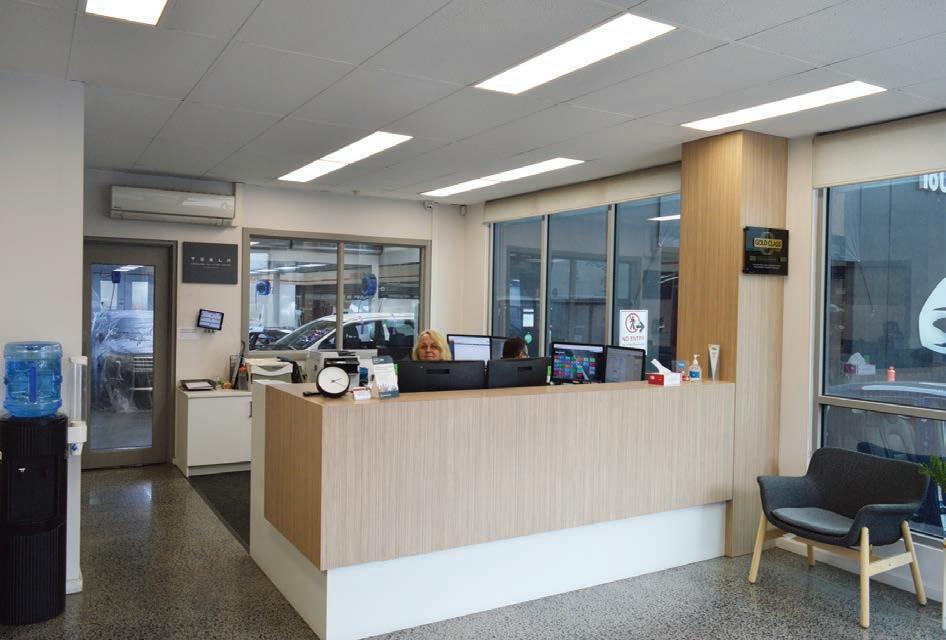
Having an open and honest community of staff, however, hasn’t come without its challenges.
“Maintaining this positive environment sometimes means having difficult conversations when things don’t work out or when someone doesn’t fit well with the existing team. Managing this for a team of over 50 staff across three locations can be challenging, but it’s an essential part of ensuring a harmonious workplace,” Clarissa says.
As soon as a new employee begins, there is full transparency to the level of training that is required.
“We actively promote a strong training culture when advertising for new staff, and this commitment has been embraced enthusiastically by our current team,” Clarissa says.
The Iacobuccis also foster the next generation of talent at their workshops.

They currently have four apprentices, two of which are on track to be signed off in the next month.
“Having apprentices is really rewarding for us. We’re always on the lookout for more apprentices and plan to focus on this area moving forward,” Clarissa says.
Every DSI Panel shop is I-CAR Gold Class accredited, which is in alignment with the Iacobuccis’ belief to keep moving forward.
“Our staff understand that this accreditation not only benefits the business but also supports their own professional development and progression in their trades,” Clarissa says.”We are strong believers in the need to constantly learn – if you stay still, you fall behind!”
The training isn’t just for the staff, as the Iacobuccis believe it also benefits current and potential customers.
“Our customers can rest easy knowing that our technicians are up-to-date with the latest industry training, which provides them with a sense of security. For us, it means we can be confident that we’ve done everything possible
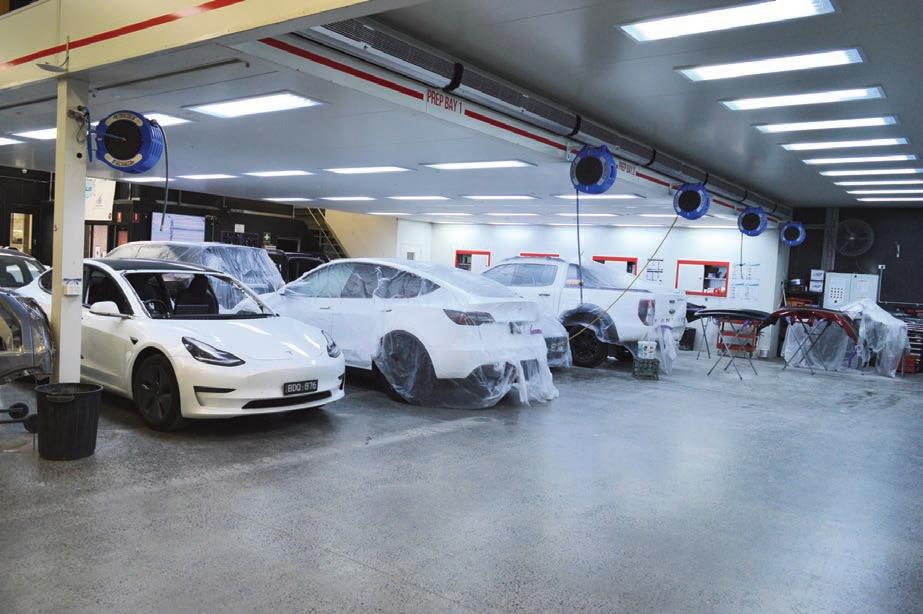
The collision repair industry is rapidly evolving, with new technological advancements like EVs and hydrogen batteries, and new OEMs entering the market. In an environment where some people might become overwhelmed, the Iacobuccis see opportunity.
“This period of change presents exciting opportunities for the industry. It’s a great time for young, driven individuals to join the field and contribute to its growth and innovation,” Clarissa says.
With a motto like ‘to remain the
have one eye on planning for the future. The Iacobuccis have recently received council approval for a redevelopment of their original site in Blackburn. This redevelopment will include adding an adjoining factory that DSI Panels has just secured.
“Even with this project underway, our plans don’t stop there. We’re always looking ahead and thinking about future opportunities, but we approach them one step at a time,” Clarissa says.
“It’s important to us that while we evolve and improve, the core values of DSI Panels remain unchanged. We want to grow and innovate without losing sight of who we are.”
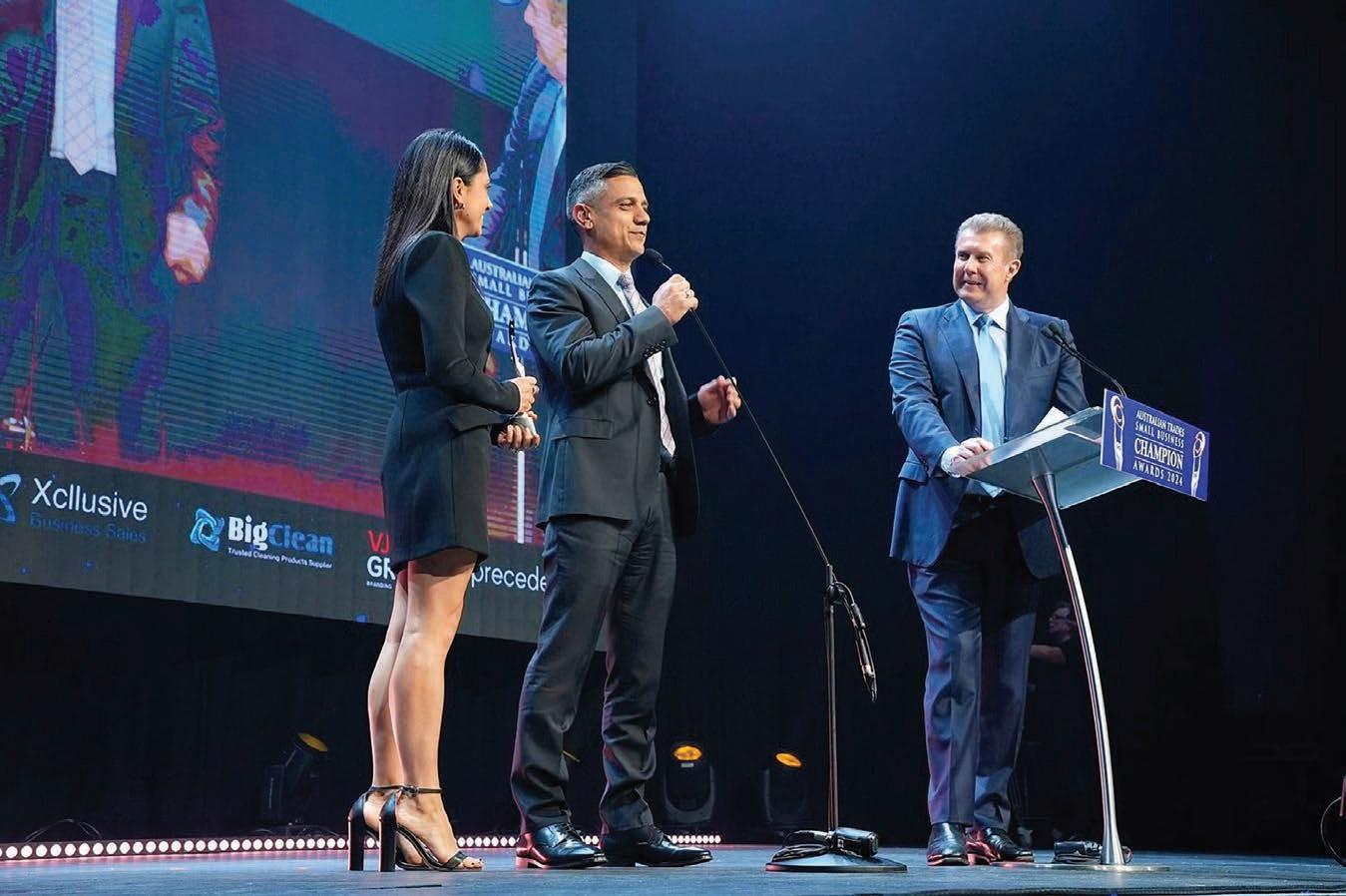
Whether it is building a business from scratch or growing an established enterprise, industry relationships are vital. When it comes to sophisticated workshop equipment, the support they offer can make the difference between failure and thriving. A major installation demonstrates how a partnership between Sandersons Prestige Accident Repair Centre and the SAPE Group has yielded results.
For Lincoln Cridland the abrupt shift to Queensland in the middle of COVID brought a raft of challenges and opportunities. It was while looking for work in the industry that he was offered the opportunity to takeover an established repair business.
“As far as owning an actual panel shop, now it was the first time I’d done it, but I’ve been around the industry,” he says after decades working in the collision repair sector.
“I was named after a car, my grandfather was a coach builder and same with my dad, We were forever building motorbikes and hot rods at home. As a kid, I pretty much grew up in the shed, welding things and building things and doing all sorts of stuff. Owning a business was just a natural progression.”
If the step to ownership on the Gold Coast was something of a leap of faith for Cridland, he brought with him this generational passion for repairs and a dedication to doing things better.

“It was just familiar territory, because I’d run some pretty big shops in Melbourne successfully. But I guess the hardest part was I didn’t know anyone on the Gold Coast. I had no contacts whatsoever.”
The value of relationships really came to the fore in this period, both with those he took over from the former owner of Sandersons and the industry contacts he retained from past roles. One of the most important of these was a developing relationship with the SAPE Group.
SAPE became particularly important when Cridland began to consider investing in the business to give it
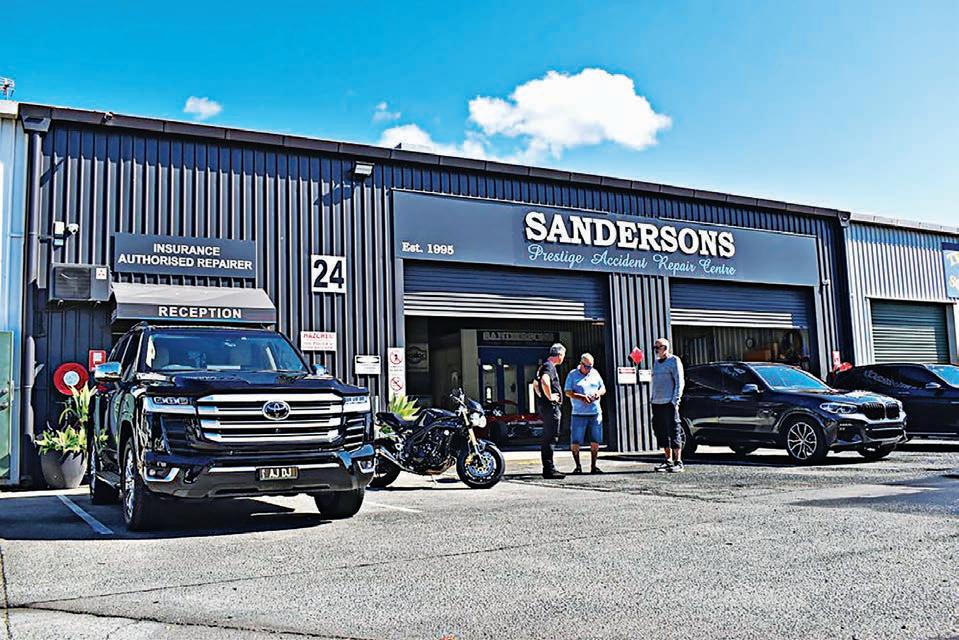
adjoining space and equipping it with the lifting and measuring equipment that would enable them to do structural repairs and a wider range of vehicles.
it involved some trial and error with benches that Cridland describes as “not cutting the mustard”. But it was the support of SAPE and their Group
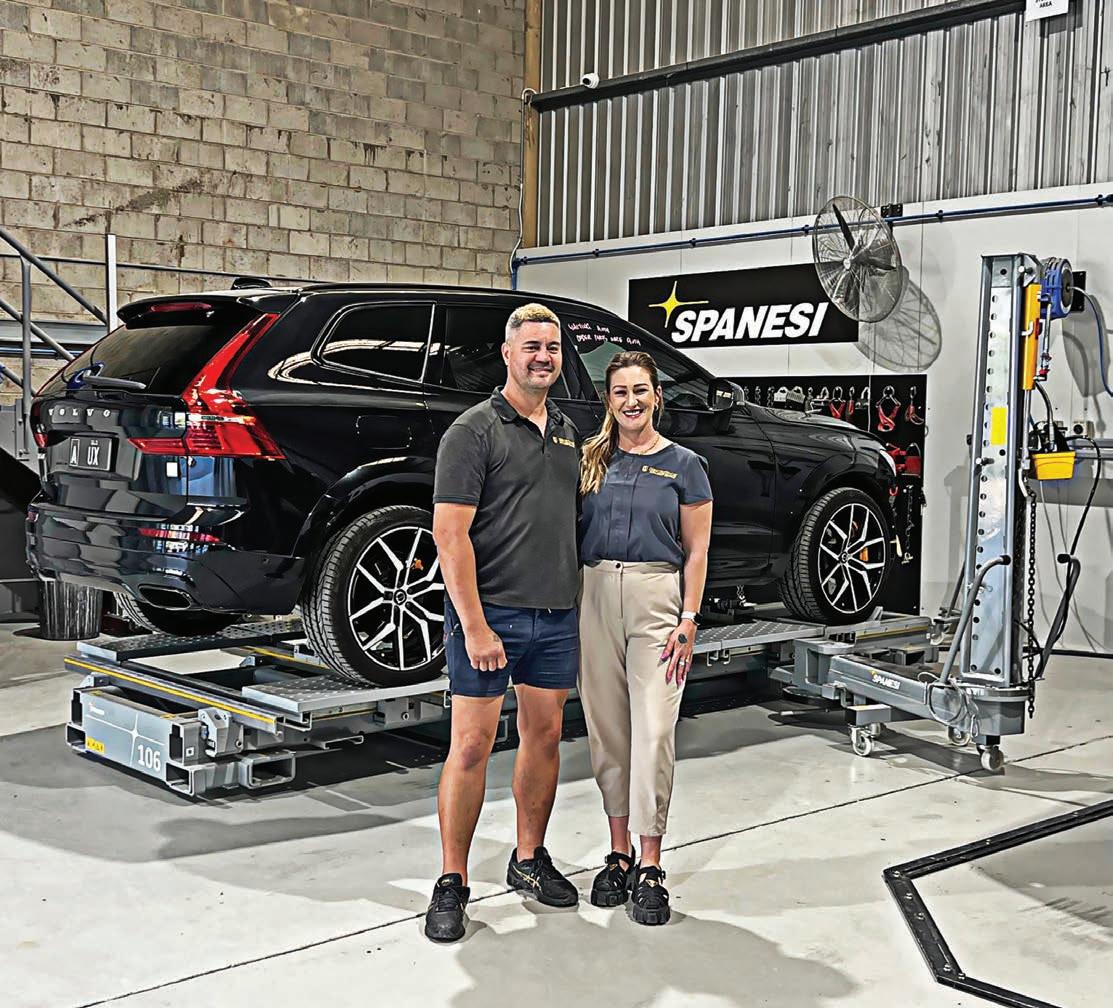
that it utilises, it is actually a smaller unit. But at the same time we can put much larger vehicles on it. The arm is detachable, and you can put the pulling arm in all different positions around the bench. That was a win for me.”
He says this flexibility is enhanced by the equipment that works with the Spanesi 106 bench.
“SAPE really came to the party with a lot of accessories. We ended up with 4WD clamps, the Euro clamps; it’s got everything.”
This has given Sandersons Prestige Accident Repair Centre as a business the confidence to take on a wider variety of repair work.
“We’re fully equipped to do anything they throw at us now,” Cridland says.
“If a job presents itself, you’re confident to know that you can tackle a specific job. If a job needs aligning or a fair amount of pulling power, we have the capacity to do it.”
The investment at Sandersons Prestige Accident Repair Centre extends to a new booth to cater for bigger vehicles, measuring eight and a half meters long and three meters high. This has enabled them to take on repairs ranging from larger utes and US style ‘pick-up’ trucks’ as they become more popular in Australia.
capability is spreading, as customers see and hear what the workshop is capable of.
“it just opens up other avenues,” he says. “When a job presents itself in the driveway out front or over a phone call or photos from an insurance company or whatever it may be, we can do it with what we’ve got, and we don’t have to second guess anymore.”
Another part of the satisfaction from the installation is how it makes Cridland feel about having an up-to date, fully equipped workshop that looks professional and modern.
“We’re really big on presentation here. I absolutely hate it when I see dust and parts and bits of tape stuck to the floor. Having this set up, it is reassuring.”
Cridland says during this investment, the back-up support of SAPE was critical; particularly the relationships he developed with SAPE’s Beau Knowles.
“You need reliable people that are going to give you the right information,” Cridland says.
“We hummed and agh’ed over certain machines, and I even looked at the bigger machine, but it wasn’t really necessary.
“All this time, Beau was honest in his opinions and his approach. He went over and above my expectations of what
For Cridland and his partner Carmen, the installation and the Spanesi 106 bench were also a cumulative investment in the business to ensure they were set up for future growth.
“I stopped recently, and I said, we have to give ourselves a pat on the back here. We came to Queensland with no jobs, and we took on a shop unexpectedly and now we’ve got triple the staff. We took on two staff members when we bought the shop and there’s 10 of us here now. We have got the business set up to where we want it.
“We’re quite happy with the size that we are at; It’s very manageable. It’s profitable, and we finally ticked off that last piece of the puzzle in the last of the big-ticket equipment items we needed.”
Cridland says while they will continue to refine details and address any issues, it was a credit to the hard work and all the support of relationships like that they enjoy with SAPE that had brought them to this point in their business journey.
“Now the processes and procedures are in place to make it all tick along smoothly. We need to give ourselves a pat on the back, because hopefully within the next few months, we’ll be able to just turn up and actually just get the work done.”
Everyone loves watching a master at work. The passion for perfection is contagious and can bring new insights into spray jobs in the workshop. A special partnership between legendary custom vehicle builder Howard Astill and PPG is providing a YouTube experience that informs, educates and entertains.
Anyone who has taken a deep dive into the YouTube video sharing platform will tell you that it’s littered with virtual rabbit holes that can quickly make huge chunks of time simply disappear. However, at the same time, it’s a medium that has the power to reach vast numbers of people across the region and, indeed, the planet, and that is exactly what the Astill Design / PPG partnership has been tapping into.
As a revered elder statesman of the Australian custom car scene, Howard Astill has amassed a treasure-trove of experience and knowledge which he is keen to make available to others. At the same time, he admits that, even after a career spanning over four decades, he is still eager to learn more.
In the second half of 2023 the opportunity came up to expand on the 25-year partnership Astill has had with PPG by documenting the stages of a ‘Muscle Car Respray’ project on the Astill Design YouTube channel. Brought to you by PPG and MIRKA, the fascinating 14-episode series follows the step-by-
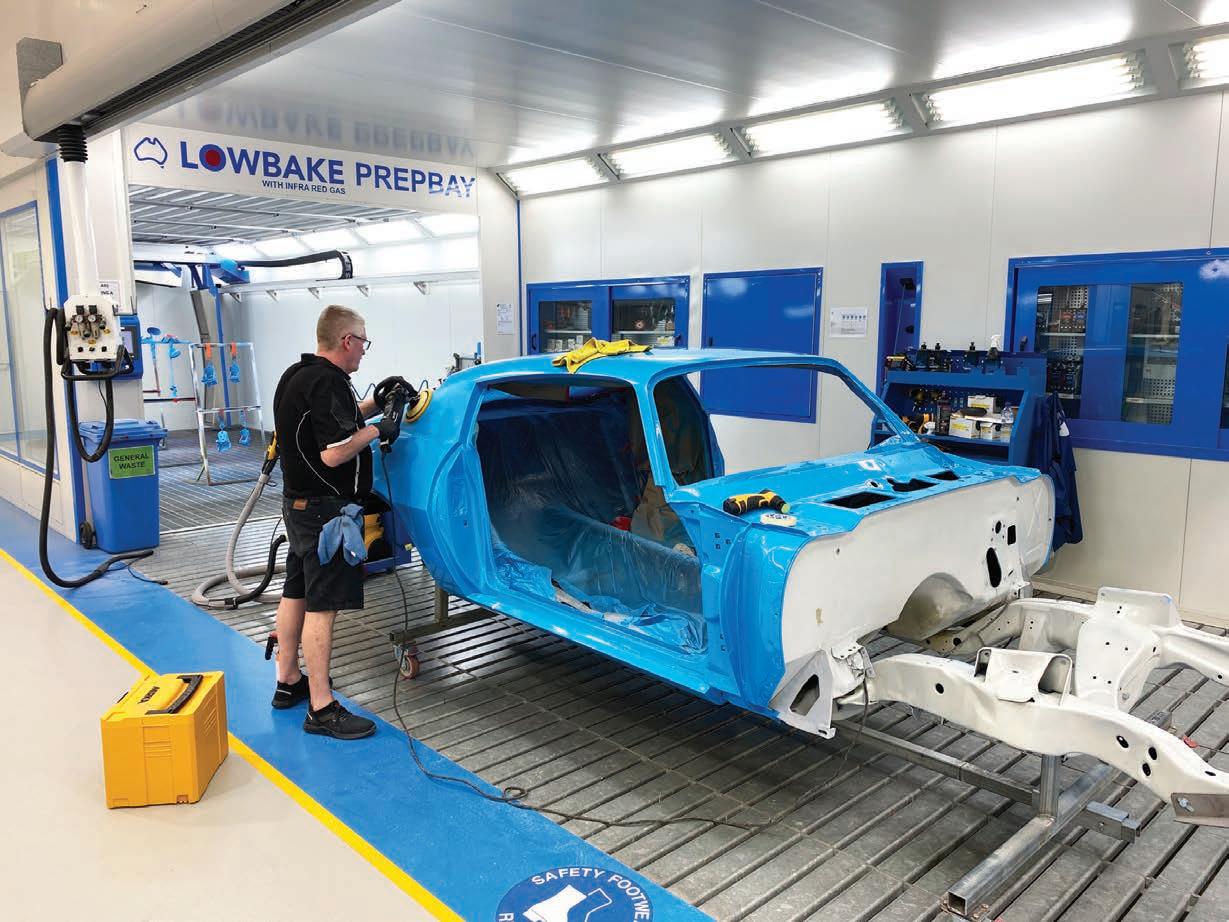

While it drew in viewers from all quarters, it was targeted at a certain sector, says Astill. “We were primarily aiming for the small custom / restoration businesses, along with DIY people who have the enthusiasm and basic skills but are looking for some expert guidance.”
Thanks to the success of the original format, the partnership has rolled on into a new series in 2024, where Astill hosts a series of videos that delve into a whole range of interesting subject matter, including correct polishing, removing stone chips, selecting the right spray gun
so he is able to ask questions and get detailed answers on why things are done a certain way or why certain products and tools are used at certain times.
“I am really pleased to be able to do these series in conjunction with PPG and MIRKA. I have had a lot of positive feedback from viewers about being able to learn from the PPG professionals.”
“We have been able to call on guest PPG experts, such as Terry Noble (PPG Customer Support Specialist), Casey Calis (PPG MSO Technical Support) and Trevor Duke (PPG Refinish National


Training Manager ANZ), to help us understand why particular tasks are done at particular times.
“Although we are covering quite technical subjects, we get answers that are explained in layman’s terminology as much as possible. For example, there are a variety of different primers we use and the PPG guys are able to explain when we use each one and why, along with how to get the best from each one. We are also able to introduce viewers to the latest MIRKA electric and battery tool range, as well as products like the new MIRKA Galaxy self-sharpening abrasive range.”
After more than 40 years in the industry, Astill could be forgiven for just sticking to ‘the way things have always been done’ but he actually prides himself on continually keeping up with the latest in products and processes. In fact, he is happy to think outside the square.
“One thing I have recognised over the years is that products and processes are constantly changing so one of the aims of these series is to provide people with the latest information, as well as tips, techniques and hacks that can be used to make the job more efficient and produce a better end result, “ Astill says.
“For instance, we have looked at opportunities to take advantage of some of the latest PPG refinish technologies in the custom car space in order to let us eliminate certain steps or shorten the process without impacting on the quality of the end result.
“A good example is to use a WetOn-Wet primer to eliminate a whole sanding step and this is where PPG has quite a few different product options. One of them is F4949 CT Protective Chassis Primer Binder from PPG’s DELFLEET® Evolution commercial transport range which is perfect for chassis and engine bays. And to finish off those parts you can also use a
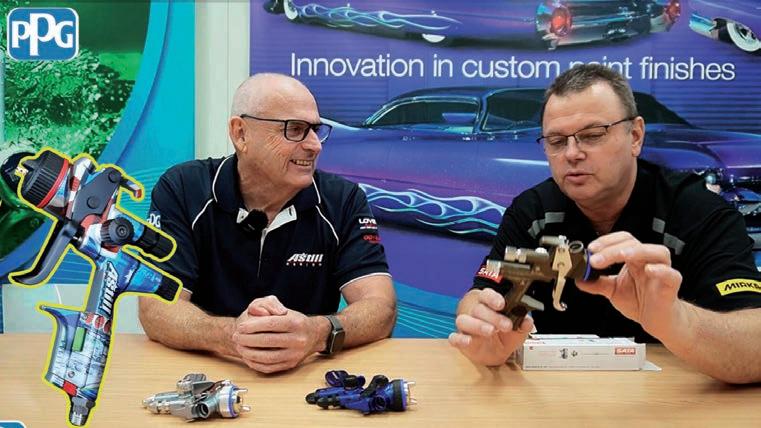
satin black from the Delfleet range.”
The latest MIRKA electric tools, abrasives and polishes have also taken centre stage in many episodes.
“I have use a MIRKA dustless sanding system for over 10 years – I don’t do any wet rubbing. I have upgraded to the latest MIRKA Galaxy self-sharpening abrasives range and I trialled the MIRKA DEROS electric sanding block. It’s a nice tool to use because it takes away some of the wear and tear on the body so I have added that to my process.”
Judging by the statistics, the PPG / MIRKA partnership on the Astill Youtube channel has been an outstanding success with terrific viewing numbers and a growing audience coming from all over the world. What is also interesting is how people are choosing to consume the content.
“People will watch our videos on the phone, PC or tablet but perhaps the biggest surprise was how many view it on their smart TV. Statistics show that almost 50 per cent of the viewing is being done on a TV. That is why we tend to do long format videos (over half an hour) because people will sit down in the evening and watch Astill Design rather than traditional TV channels.”
One unexpected consequence of hosting a popular YouTube channel is that Astill has become more well known.
“I was walking through Los Angeles airport on the way to SEMA when a guy yells out ‘hey Howard’. It was an Aussie guy who just wanted to say how much he loved the show. Then an American guy did the same thing at a convenience store on the way to Las Vegas. Even back home in Wollongong, people will stop me in the street to tell me they love the show!”
Over a 25-year partnership, Howard credits PPG with helping him produce some of the best paint finishes in the country and that continues today. As well as PPG products featuring on the Muscle Car Respray, they are also being used on Astill’s current XC Falcon Panel Van build project.
You can follow that build by tuning into the Astill Design YouTube channel (www.youtube.com/@AstillDesign), as well as see coverage of various custom vehicle shows and events. Fresh content appears regularly and, if that is not enough, there is a vast back catalogue of videos to pick over.
This is one YouTube rabbit hole definitely worth going down.
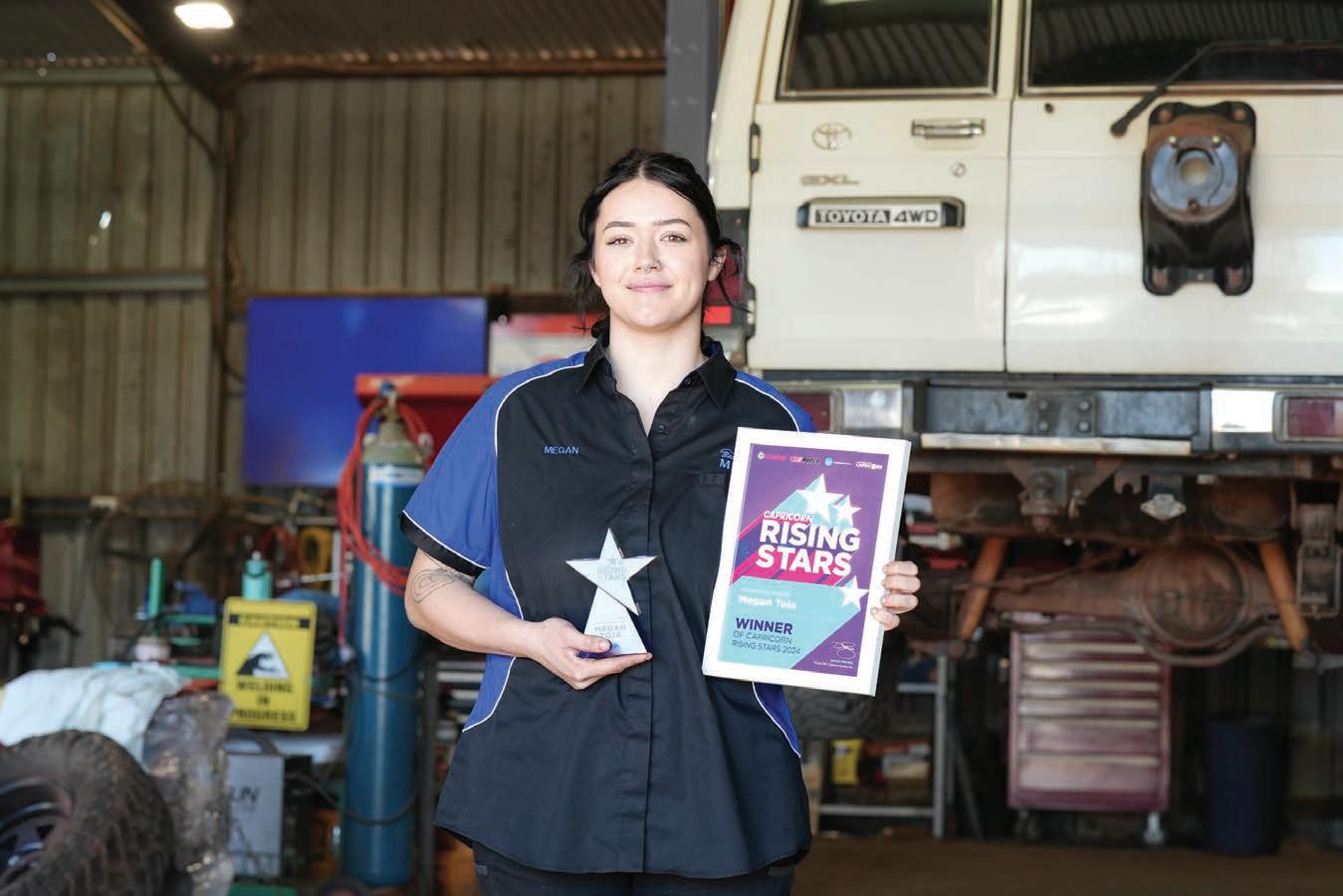
A small country town and hours of commuting time are no barrier to one of the automotive industry’s best and brightest future stars.
Small communities in rural towns are often faced with unique challenges. The town of Badgingarra in Western Australia is no exception.
With a population of 173 people and being 200 kilometres north of Perth, Badgingarra has been put on the automotive map by supporting Capricorn’s latest recipient of the Rising Stars Award, second year apprentice, Megan Toia.
The Capricorn Rising Stars Award recognises and rewards outstanding apprentices in the automotive aftermarket industry.
Travelling 60km from her hometown of Moora to her work at Badgingarra (Badgy) Motors, Megan is nothing short of dedicated.
Megan also regularly makes the 200km trip to South Perth for her TAFE studies in three-month blocks throughout the year. Megan starts her
2.5-hour drive to TAFE the night before classes begin and is then up at 5:30am to beat the traffic.
Megan’s life is centred around her love of the automotive industry.
Capricorn noted Megan’s passion for the industry, her love of learning and her constant pursuit of excellence. These qualities impressed the multiple rounds of judging from among 300 nominations.
Megan’s boss, Harry Burgess nominated her for the award last year, but time restraints meant she was unable to complete the application in time.
“This year I had some time off when the original entry was due, and my boss was encouraging me to complete the questions and submit my responses,” Megan says.
“I’m so glad I took the time this year to follow through with the questions.”
Megan has always had a passion for cars and practical learning, so working in the automotive industry was a perfect fit.
“As I have always loved cars and learning about how they worked, while also loving problem solving and getting my hands dirty, this apprenticeship has proven to be perfect for me.”
Capricorn Group CEO Designate Brad Gannon says he was inspired by many of the nominees and particularly Megan’s dedication.
“It’s an amazing story,” he says.
“The passion and dedication that Megan’s got for not only the industry, but for her job itself, and the personal commitment that she makes each and every day with travel. I think that’s what the industry is all about.
“The industry is about passion, passion for people, passion for cars and Megan’s an absolute worthy winner, because she shows both passion for

the team she works for, passion for her customers, passion for that problem solving.
“That’s the automotive industry in a nutshell.”
But Brad also wanted to highlight the outstanding talent of the finalists and the calibre of more than 300 Capricorn Members who nominated their talented apprentices from all over Australia and New Zealand, showing the breadth of talent across the industry.
“Megan was a worthy winner, but there were so many worthy nominees and that’s really exciting for the industry, because this passion is an amazing thing, and these people are passionate about what they do each and every day.
“If you’re passionate about what you do every day, you’re really not working a day in your life. To find a job and an industry where you can have that genuine passion, is truly special.
“When you see these nominees, lots of them have had challenges in getting to their career, that’s not uncommon, but to be able to overcome those challenges is a hallmark of many of them and it’s inspiring.”
Megan’s boss at Badgingarra Motors, Harry Burgess, was also glowing in his praise for her motivation and enthusiasm.
“Megan is a great asset to my business,” Burgess says.
He highlighted her detail orientated approach and positive attitude in being an asset to the business.
“She applies pressure to herself to complete her tasks to the highest standards and she is very thorough. She is a fast learner who follows instructions, can work independently and takes constructive advice well.”
Megan was quick to thank her boss for showing her the ropes as she continues to study at TAFE.
“Harry has been very patient, he has walked me though all of the mistakes that I have made and has been incredibly supportive throughout my exciting automotive apprenticeship journey,” Megan says.
Megan’s partner has also been an integral part of her journey.
“He has been there for me on days where I question whether I keep going. He’s been there financially and emotionally, and I cannot thank him enough,” Megan says.
Brad Gannon stressed that the workplace was a powerful contributor to the success of young people.
“We could see from both the nomination and the comments made in the nominations, that support came through so clearly from Megan’s boss, Harry,” Brad says.
“This is key for all industries and all organisations, but particularly when you’re starting out; to have that support around you, that imparting of knowledge, that comfort to learn new things. No doubt when you’re learning new things, there’ll be challenges along the way, but having that support network around you makes such a difference.”
Throughout Megan’s journey in the industry, she has encountered few females in her courses, and at her workplaces. Despite this, Megan has made a community for herself in the industry that is based on mutual respect and merit.
“There were two other girls who started in my TAFE class, but they both ended up dropping out for different
reasons after a few months,” Megan says. “I’m lucky to have met two great guys who have turned into good mates at TAFE,” .
At her workplace, Megan highlighted how her gender has no influence over how she is treated.
“At work there has never been an issue with being the only female apprentice. There is a female receptionist who is lovely, and Harry’s partner Sharon has also been a great support,” Megan says.
“My gender has never been an issue; they will make fun of me no matter what.”
Behind every worker
In another sign of her support, Megan’s family have been behind her every step of the way. She praised her parents for their continued encouragement.
“My mum was always my biggest inspiration for being a strong woman. She was in the army in the 80’s and 90’s, and she constantly had to prove herself,” Megan says.
Megan has found herself in a similar experience to her mother’s, having to double down on her work and prove she is worthy of being in the industry.
“I have had people at TAFE and customers look down on me because I am female. But because I have such a great boss and coworker I feel really supported. Whenever someone tries
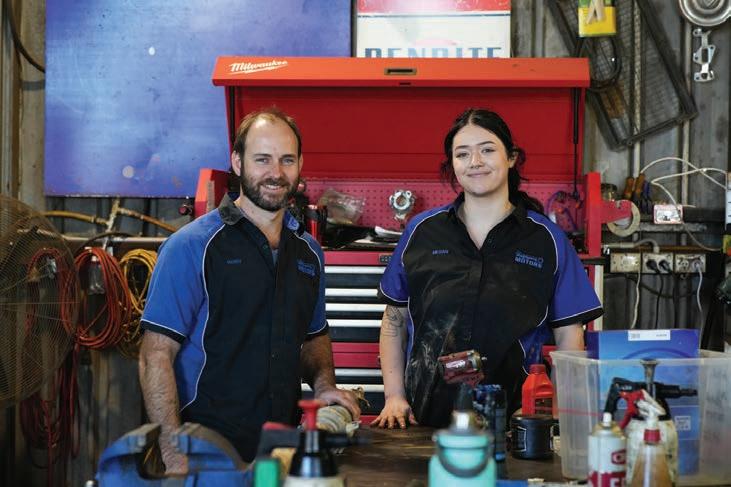
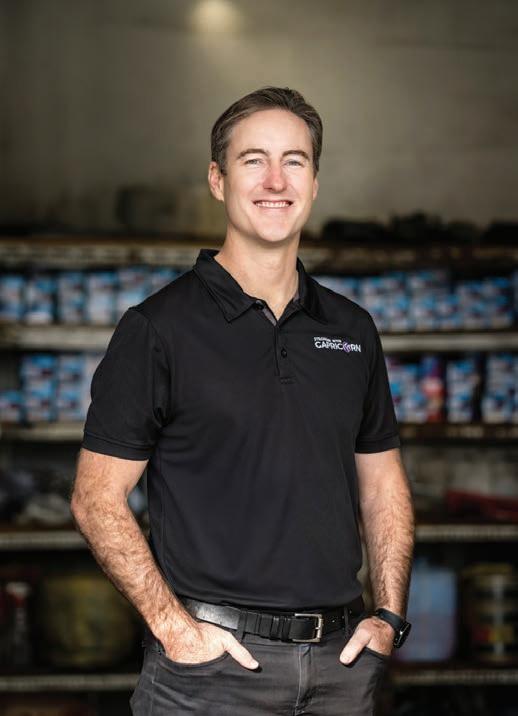
to talk down to me, I know they always have my back,” Megan says.
“I have such a strong support system around me.”
Brad Gannon says Megan’s story not only shows the importance of support but the critical role that families play in helping young people choose and sustain an automotive career.
“The reality is the automotive industry is one of the best kept secrets for people looking for a new career, and so we do need to step up and start promoting it, particularly to families. Let the mums and dads out there know that it is exciting and innovative, because they do have a significant influence on where the next generation look for their career.
“The message as an industry we want to get out is there are more and more diverse new skill sets required all the time. And I think Megan puts it best when she says, it’s a great industry to be in.
“We absolutely need to get that message out there and influence, parents, teachers and career counsellors that this industry is going places.”
For people thinking about entering the industry, Megan encourages them to have patience and belief that the pathway will lead to endless opportunities.
“It can be daunting going into a trade, especially if you don’t have the support network. The pay and the motivation to get started can be difficult,” Megan says.
Despite the initial barriers, Megan highlighted that, “It gets better, it gets way better.”
“As soon as you are qualified, the world is your oyster. There is so much you can do with your qualifications.”
Brad highlights Capricorn’s continued commitment to the Rising Star Awards was not only to celebrate role models like Megan and her supportive workplace but to show the wider automotive industry at its best.
“That’s part of the reason why Capricorn runs the Rising Stars, because we want to give that opportunity for people to recognize great apprentices,” Brad says. “And not only apprentices, but we also know that celebrating staff at any level, is great for staff, team engagement and morale.
“We want to celebrate the heroes and heroines we have in our industry that every day are doing an amazing job and fundamentally keeping people safe and that is what they do by having a properly serviced, repaired and maintained vehicle.
“I think the other aspect of this rolemodelling is it really allows people to thrive. This is an industry that inspires massive passion. It really changes people’s lives. That sense of purpose in what you do every day is really a hallmark of this industry.
“There’s many jobs out there, but not so many jobs that really give you that sense of purpose and belief and skills that means that you’ve got your own trade, and ultimately can own and operate your own business off the back of that trade.”
“They are things that are truly unique, something that we should
be proud of, and something that as industry, we should continue to celebrate.”
For Megan her automotive journey is just beginning and if her skills offer her this flexibility, she is also a person already with plans to give back to the industry.
Megan aims to become fully qualified at Badgingarra Motors and after a couple of years she plans to gain a heavy diesel trade qualification, a qualification that will allow her to work in the mining industry.
But Megan’s ultimate ambition is to open her own automotive service and repair business. Her goal is to employ people that typically aren’t well represented in the industry, creating a safe space for them to thrive, as she has found at Badgingarra Motors.
The Capricorn Rising Stars Award is made possible thanks to its sponsors, Castrol, Repco and The Workshop
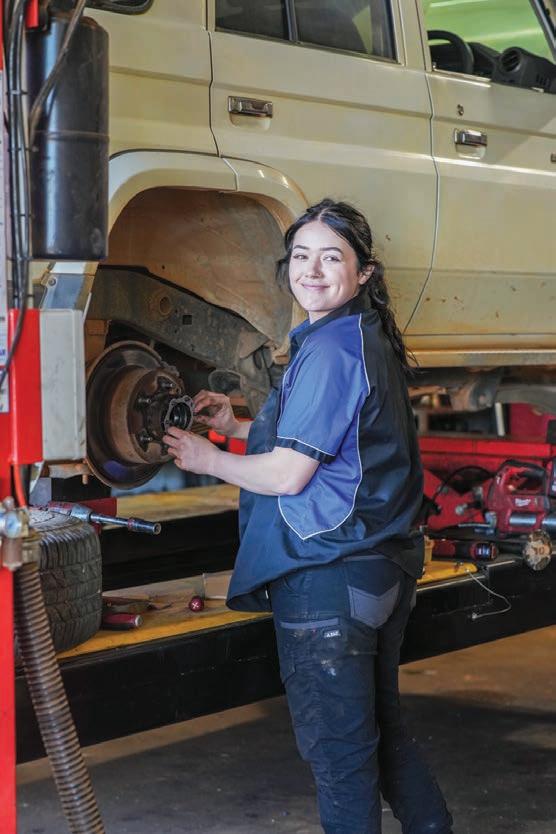
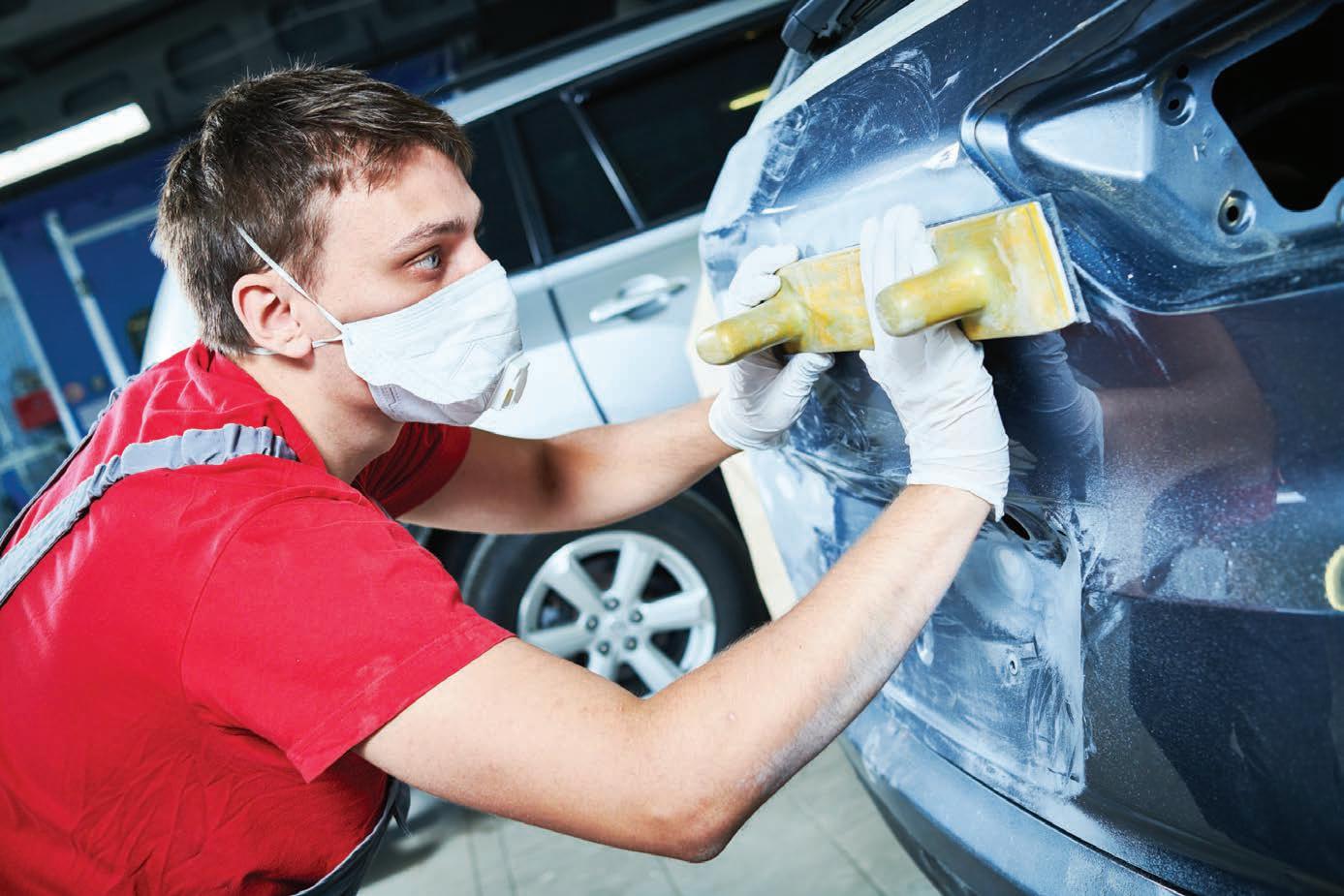
It has been years in the process, but a milestone point has been reached. The collision repair industry can shortly expect a rewritten MVIRI Code of Conduct to guide future relations between repairers and insurers.
Earlier this year the MVIRI Code Administrative Committee (CAC) commissioned MST lawyers to complete one of the key recommendations of the 2022 Schaper review into the code, to make it clearer and more accessible.
This new draft version will shortly be released for industry consultation and new CAC chairman George Manos has given an idea of what repairers can expect.
“The new code will be clearer about the responsibilities of both repairers and insurers. It will be written in plain English, making it easier to understand and improving awareness,” Manos says.
A key part of this will be addressing the specific areas highlighted as needing change by the Schaper review.
“The implementation of the recommendations from the Schaper review will require the establishment of a new and improved website to make it easier to navigate and more useful in educating people about what is and isn’t considered a dispute under the Code.”
While some automotive bodies have pushed for a mandatory and federally regulated national code, and cite NSW and South Australia as precedents, this is not the first priority for the committee.
Manos notes that the question of
whether to mandate the Code was not in the Review’s terms of reference and that education will play a stronger part in building repairer confidence and encouraging more signatories.
“A new Code will require significant initial and ongoing communication, education and training not only for insurers and repairers, but also other stakeholders like state and federal government regulators,” he says.
“Better education and awareness raising about the existence of the Code – what it’s there for and how dispute resolution works – will be crucial. The Schaper review highlighted this, and it is a key focus of our efforts. Clearer communication about the Code, along with promoting its benefits, will naturally encourage greater engagement and participation.”
Another contentious issue surrounding the code is the question of enforcement and sanctions and it is another focus for the committee.
“Discussions amongst the CAC are ongoing, so it’s too early to give specifics. However, this is something we are actively looking into, along the lines of Dr Schaper’s recommendations,” he says.
“We recognise that enhanced enforcement, including the introduction
of sanctions, is crucial for ensuring confidence that when a complaint is lodged, it is taken seriously and dealt with appropriately.”
The CAC will also look to refining how it deals with unresolved issues between repairers and insurers and is actively discussing further independence in the dispute process.
“Under the current Code, Small Business Commissioners and the Resolution Institute play a role in mediation or external determination,” Manos says.
“The CAC has also agreed to governance changes to bring more independence and professionalism to how the Code is managed.”
In line with Dr Schaper’s review, a new website for the code will also enable the committee to properly manage the data arising from the usage of the website.
“We will continue collecting data on disputes and further improve this process by upgrading the website, as well as working closely with industry participants and regulators. This will help us track not only the number of complaints and disputes but also their nature, allowing us to identify trends and emerging industrywide issues.”
For more information go to www.abrcode.com.au
WorldSkills is a highlight of the trade skills sector every year and displays a wealth of future spray-painting talent from across the globe, including Australia. The Australian repair and skills industries even had a hand in helping along the world’s best.
One of the star spray painters from WorldSkills 2024 held in September in Lyon, France conducted some of his competition preparations in Melbourne.
Yuto Hoshino, 22-year-old participant from the Aichi Province in Japan, won the Gold medal at the international ‘Olympics’ of trade skills, with a score of 758 points.
Hoshino was also one of six international competitors who took part in a special competition training preparation week at Kangan TAFE in Melbourne in May with the support of Glasurit.
Hoshino told NCR this year the competition was all about honing his skills.
He has worked for Toyota in Japan and it was here he discovered his talent for car painting, and from there joining the WorldSkills Competition has been a continual development.
“I had no experience in painting before working in the automotive industry, but I am really enjoying it so far,” Hoshino said.
Apart from the winter cold he experienced in Melbourne, Hoshino was glowing about the support of his team, the WorldSkills support and the facilities he trained on in Australia at the Kangan Institute.
“It is a great institute (Kangan) with the spray painting and drying booths, it is well equipped for what we do.”
BASF’s Coatings division was also the exclusive global industry partner for the Car Painting skills section in France and supported the young talents and experts from around the world with its Glasurit 100 Line.
Part of this is an extensive training program, including the Australian events, where Glasurit experts train the finalists
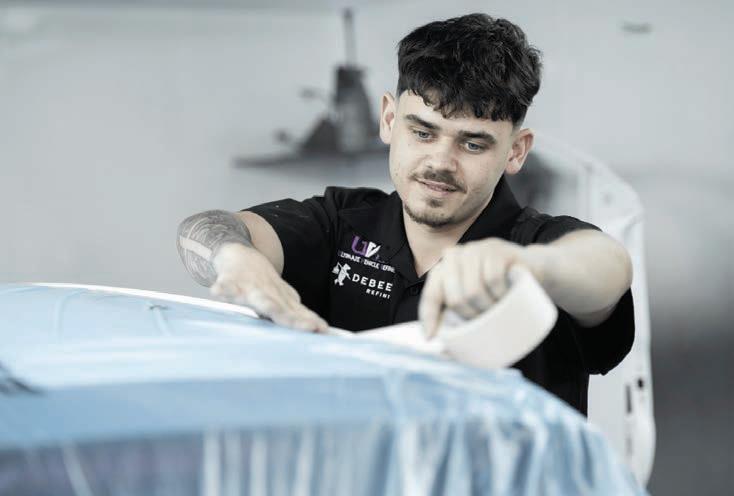
via a series of exclusive digital webinars, online training courses and select training courses held at the Refinish Competence Centres.
The Car Painting category required participants to restore damaged vehicles to pristine condition, with an emphasis on precision in matching colours, textures, and finishes all in a race against the clock.
The testing and advice of the experts has paid off for Hoshino, beating a host of talented competition from 23 different countries.
Lara Kaufmann from Switzerland, Jason Scherer from Germany and Ronan Le Tutour from France won the Silver medal in Lyon and all scored silver medal scores of 728 and 727.
Australia’s outstanding young painter, Kynan Bonanno from NSW scored 680 points but missed out on a medal.
For the third-year apprentice spray painter who was also an MTA NSW representative, Bonanno says it has

up to the rigours of competition after his impressive performance in the Automotive Refinishing category at the WorldSkills National Championships in Melbourne, where he secured first place at a regional level and fourth place at the national level.
In July he was also chosen as a finalist in the Apprentice of the Year category in NSW and has since undergone months of training to qualify him for the 2024 Skillaroos Training Squad.
Like the true artisan, Bonanno told NCR in May that his motivation came from the finished product and pursuing the perfect job.
“Some panel repairers talk about the feeling of a finished job but for a painter it’s even better, once you see a that shiny paint, it is something else,” he said while competing in Melbourne.
Bonanno works at Boxalls Automotive Industries in Pendle Hill and says he has inherited a passion for automotive from his father who owns and runs Boxalls.

MTA NSW CEO Stavros Yallouridis says the industry body was excited to see its former student represent MTA on the world stage.
“Kynan’s journey to WorldSkills Lyon 2024 is an example of how top-tier training is an asset to the future of the automotive industry. We are incredibly proud of his accomplishments and excited to see him represent Australia on an international stage.”
MTA NSW ensured Bonanno was equipped at the highest level and covered his costs to France.
The competition in France uses the Glasurit 100 Line, Refinity and paintrelated material from SATA and 3M and the car painters are encouraged to be mindful of using the precise amount of paint materials to achieve the highest quality results, thereby enhancing ecoeffectiveness for both the environment and the business.
Among the 23 competitors, Glasurit and SATA awarded first place for their most eco-effective preparation of process to Yuto Hushino from Japan. Second
place went to Vikash from India, and third place went to Hui-Shan Chen from Chinese Taipei.
BASF Senior Vice President, Global Automotive Refinish Coatings Chris Titmarsh described the event as inspiring and ‘spectacular in every way’.
“The passion and excellence shown by the high calibre of talent in the Car Painting skill competition has been phenomenal,” he says.
“We have raised the bar with Glasurit 100 Line and we’re setting new standards for sustainable skill development required by the industry. With WorldSkills, and our vocational training partners, we’re committed to delivering an even more diverse and highly skilled workforce to lead the future of collision repair.”
WorldSkills International CEO David Hoey thanked Glasurit for its support and continuing to lead the way with innovative processes and solutions.
“We know that skills development is a key driver of sustainability especially when it is at the heart of government, industry, and education strategies,” Hoey says. “Along with our partners, we have placed extra effort to develop

tangible objectives for the responsible management of the event and its impact, particularly regarding the environment.”
US coating giant PPG was an official gold sponsor of the event, offering support to the finalists with the theme ‘Let’s Paint Your Future’, aiming to showcase the company’s focus on skills improvement, innovation, sustainability, community engagement, and diversity.
PPG Vice President, Government Affairs, Europe, Middle East and Africa Pascal Tisseyre says the company’s support follows a proud tradition of fostering future talent.
“We are proud to partner with WorldSkills Lyon 2024 and emphasise PPG’s dedication to supporting skilled professions,” Tisseyre says.
PPG says their sponsorship is part of its global commitment to support education and workforce development initiatives that prepare students for careers in the skilled trades.
In other events Japan also took out the top position in the Autobody Repair section, Takaya Koishi scored 738 and a Gold medal. He was followed by Junfeng Zhu from China on 736 points and David McKeown the United Kingdom.
Australia did not have a representative in this skills section but Harrison Field from Australia did take out a bronze medal in the welding competition with a score of 727.
The global vocational skills event gives more than 1,500 young professionals the opportunity to come together to compete in 64 different skills categories across a range of industries.
The world’s first WorldSkills Museum was inaugurated in Shanghai, China, in 2023 and the 48th WorldSkills Competition will be held there in 2026.
Shawn Buie’s story is a model in resilience. Breaking through numerous barriers and paving the way for others with a disability is only a fraction of his contribution to the automotive industry.
There aren’t many people in the industry like Shawn Buie. Not only does he raise awareness for the deaf community in the industry, but he has a strong will and desire to push through any obstacles that are in his way.
Overcoming the challenges of deafness has led Shawn towards a career he loves. He has impressive plans for his future and is constantly developing ways to best navigate his disability in the automotive repair industry.
Shawn is employed as a full-time panel technician, and is currently working with Drive Group in Kingston, Brisbane. Shawn also has a side passion project, his own business – Buie’s Garage.
Shawn began his passion for restoring and repairing old cars on the Central Coast in New South Wales ten years ago. He moved up to Brisbane, Queensland, five years ago to explore new opportunities and pursue his career.
Most teenagers are unsure of which direction they want to take after leaving school. Luckily for Shawn, his older brother was a guiding figure that nudged him in the right direction. After listening to his brother, who was studying to be a mechanic, Shawn decided to enrol in a tertiary course.
“My brother encouraged me to give a pre-vocational course in panel and paint a go,” Shawn says.
“Once I started, I immediately enjoyed panel beating. It all just went from there.”
Shawn’s passion for panel beating started in his pre-vocational courses, and
his love of repairing vehicles, especially old cars, has kept him in the industry, despite a few challenges along the way.

Shawn has successfully integrated his deafness into a career in the automotive industry. The industry is becoming increasingly aware of the issues of access and acceptance, as the profile of the industry is changing to expand and grow into a diverse sector of the workforce.
After Shawn’s experiences in the industry over the past decade, he wants
Having a disability has not barred Shawn from doing his job, but the day-today communication with team members has sometimes been an issue.
NCR recognises the ongoing support of IAG for the Future Leader’s series and their continued support in developing industry skills.
“Another issue was that some staff find the extra effort to communicate with me frustrating and that caused some tensions,” Shawn says.
Advocating for himself and sharing his experiences with his workplace has been a strategy that has worked in Shawn’s favour.
“I have overcome most of the barriers by communicating my needs and feelings. I have been met with some very patient and understanding people and they have made the workplace so much more enjoyable,” Shawn says.
“That is also another reason why I have set up my own business. I want to have other deaf employees and make them feel comfortable at a workplace without communication barriers.”
Shawn also faced multiple setbacks at the beginning of his career. Shawn underwent additional training after realising he still had more to learn before becoming a full qualified panel technician.
“I thought and felt as though I was
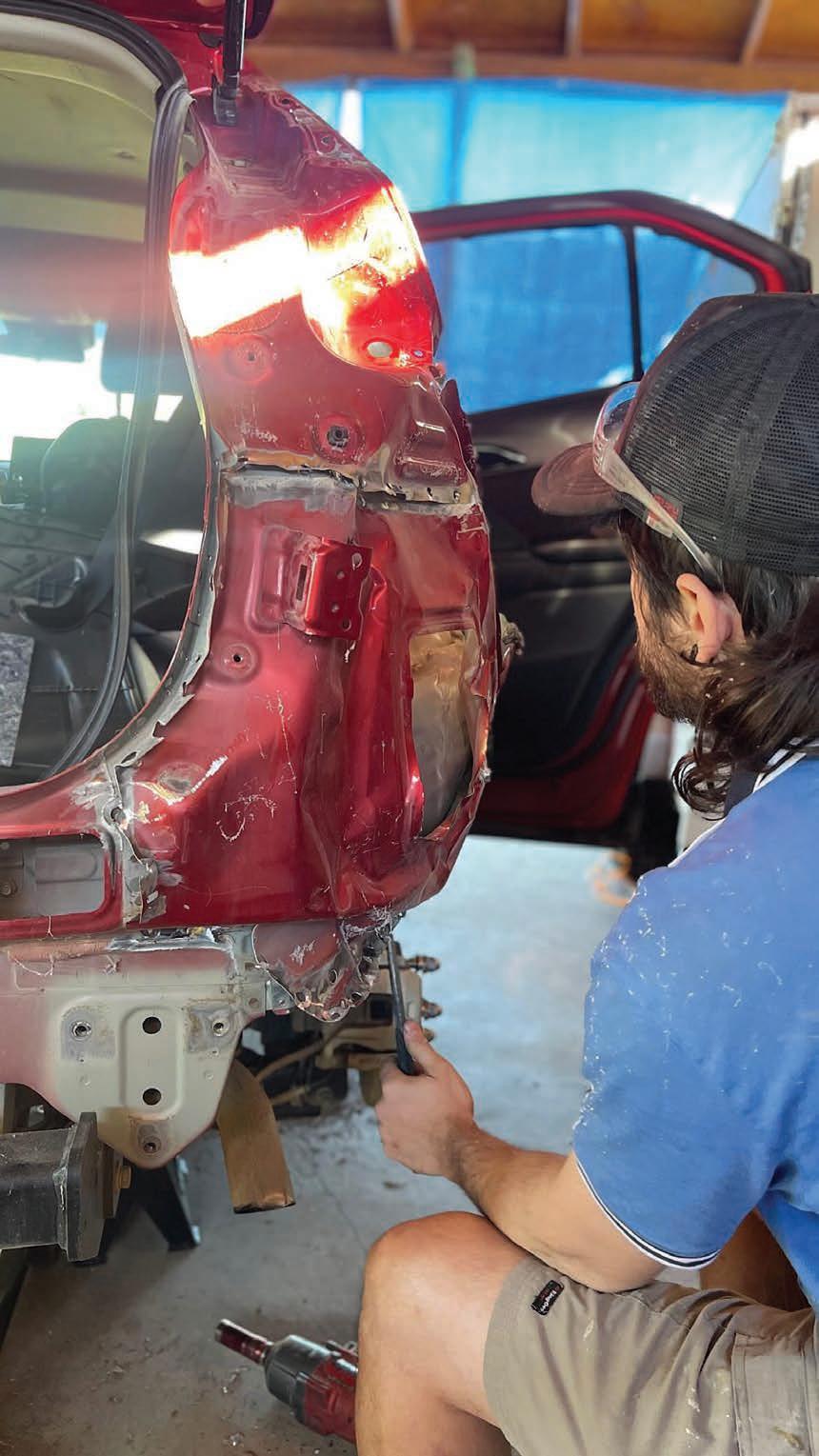
technician has been a highlight of his career. Back in 2019, Shawn was interviewed by NCR, and he spoke about his dream to one day set up and own his own business. Now, five years later in 2024, his dreams are finally coming to fruition.
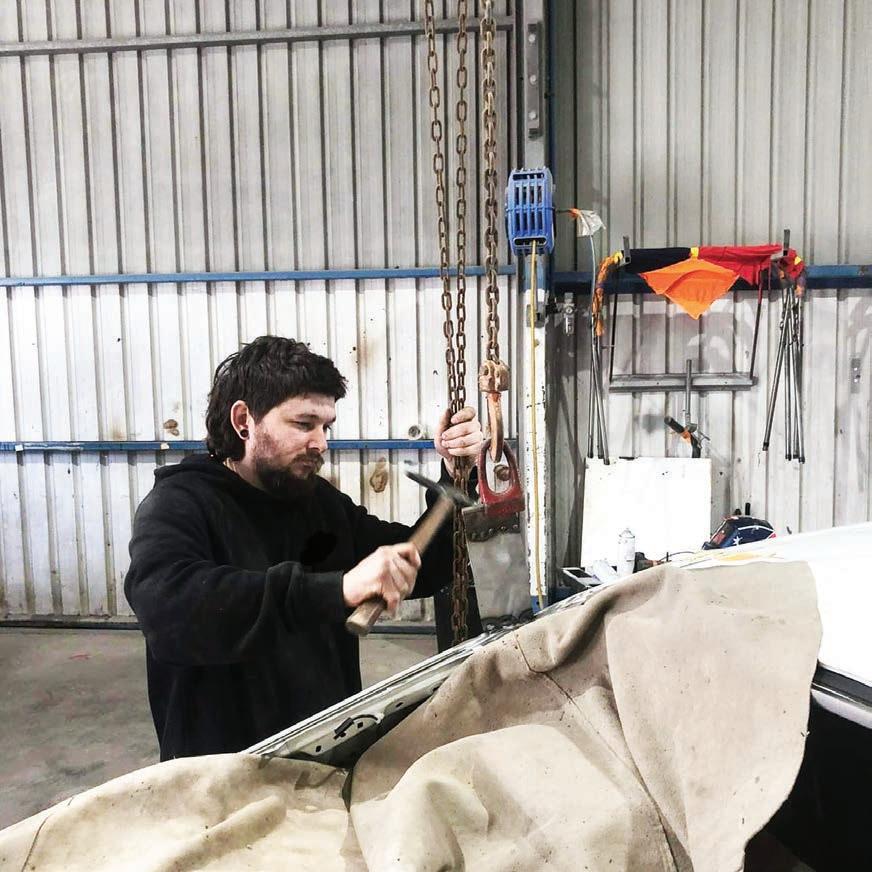
Shawn’s ultimate goal is to grow his business to a point where he owns a repair shop and can be his own boss.
“Becoming fully qualified was a great moment. Also making the first step in setting up my own business has been a proud achievement,” Shawn says.
“The whole process of setting up a business is exciting and it’s finally happening. It’s an amazing feeling.”
For anyone wanting to join the industry, but especially those who face adversity, Shawn encourages them to give collision repair a second thought.
“One of the key things I learnt is, to be efficient with your time,” he says. “Ensure you check that all parts are ordered and delivered prior to starting the job. Second thing would be buying tools as you go, it is crucial.”
“You can achieve anything you put your mind to if you have a true passion for the career.”
Australia’s key automotive bodies have teamed up to solve one of the industry’s biggest problems; how to deal with almost a million dead cars each year that have been written off or reached their end of life.
About 850,000 motor vehicles reach this point every year in Australia, generating around 1.36 million tonnes of waste, much of which goes into costly and potentially environmentallydamaging landfill.
Currently 70 per cent of the material is recycled or reused but the aim of the new End-of-Life Vehicle (ELV) strategy is to get this rate much higher and closer to the international standards set in Japan and the EU where at least 95 per cent is reusable or recoverable.
The Federal Chamber of Automotive Industries (FCAI) and the Motor Trades Association of Australia (MTAA) along with the state-based motoring associations have united to develop the strategic pathway for boosting automotive recycling through a product stewardship scheme. This would achieve higher material-recovery rates, avoid interstate leakage of the vehicles and reduce landfill.
The plan would oversee all passenger vehicles and light commercial vehicles under 3.5 tonnes that make up the bulk of the Australian car parc. It also wants a future pathway to include all vehicle powertrain technologies and new materials, such as from EVs.
The extensive study has identified a fragmented recycling sector, a diverse vehicle fleet and insufficient processing options for non-metal materials as some of the key barriers preventing reducing the problem for end-of-life vehicles .
More to deal with FCAI CEO Tony Weber says getting an ELV scheme operational may take some time but the sheer number of ELV
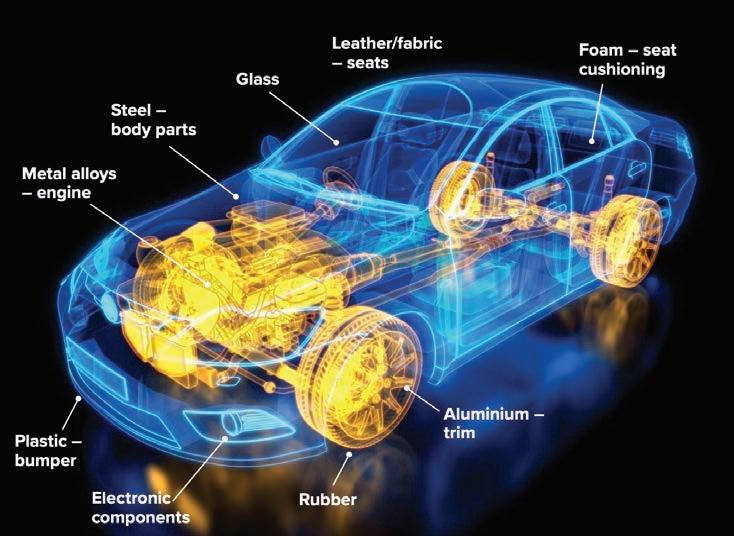
vehicles amassing in Australia meant acting on its advice was critical now.
‘“The study presents a way forward for the sector and clearly shows the need for cooperation between the automotive, dismantling, recycling and waste management sectors and the different levels of government,” Weber says.
While the report recognised the substantial part played by the recovery industry in sourcing useable parts that are often a cheaper and more viable option for the collision repair industry, and the recyclable metals industry, the problem lies with numerous other materials that make up a normal motor vehicle.
These include plastics, glass, rubber and textiles that do not have the same organised recovery rates and often went to landfill.
The strategy makes a comprehensive
study of overseas models, including manufacturers like Japan and South Korea and EU nations such as the Netherlands, Ireland, German and the UK.
It distinguished several key factors that will be critical in ensuring the success of any scheme, including establishing a nationally consistent scheme that overcomes complex and diverse state regulations.
But it also maintains the scheme must be compulsory and co-regulation was needed between industry and government.
However, the complexity of the solutions and the transitional time meant Australia needed a customised model for an ELV plan to take the best of international examples, such as the potential adoption of an Extended Producer Responsibility to increase whole-of- life ‘ownership’ for products.
The report has detailed the complex waste journey of a vehicle at an Authorised Treatment Facility with this graphic.
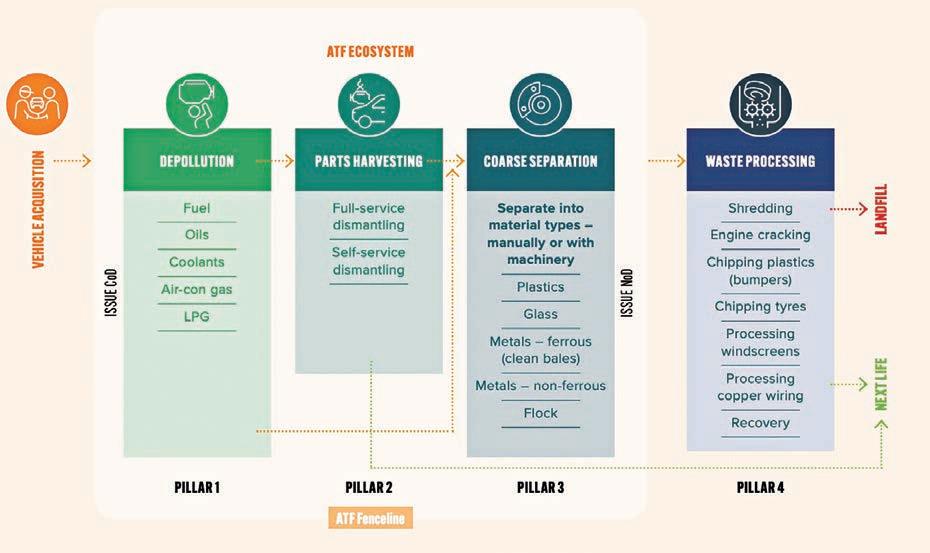
The strategy also identifies new and emerging technologies as key to the scheme’s success, including developing better ‘cradle to grave’ tracking of vehicles and viable recycling solutions for the non-metal parts of a car.
VACC CEO Geoff Gwilym says the proposed stewardship scheme would be a “significant step” towards upgrading vehicle recycling infrastructure.
“Our industry needs to improve recovery rates and adopt more effective practices in automotive recycling, but we need support to achieve this,” Gwilym says.
“We are eager to assist our members through this transition and assist them to capitalise on the opportunities that an end-of-life vehicle program will create for small to medium sized businesses in particular.”
The report notes there is currently little capacity to track the three key stages following a car’s deregistration; the depollution of fluids like batteries and other dangerous materials, the dismantling and then its crushing and shredding.
The parts reuse market and the recycling industry were also cost dependent and victim to market value volatility.
The strategy calls for better processing of vehicles at a preshredding stage including better sorting and triaging when they are dismantled to reduce shredder residue.
“One clear commonality was that the achievement of high standards, consumer accessibility and strong environmental performance typically aligned with the use of Authorised Treatment Facilities,” the report notes.
“Authorised Collection Facilities (ACF) and Authorised Treatment Facilities (ATF) would need standardised operating and environmental standards along with Certificates of Destruction (CoD) to reach the higher standards and guarantee the success of any initiative in Australia.”
MTAA CEO Matt Hobbs says the substantial work put into the report gives a clear pathway forward.
“This is a pivotal moment for us to enhance recovery efforts and reduce environmental impact as the industry moves towards a more sustainable future,” Hobbs says.
“Our research reveals the necessity of modernising Australia’s vehicle dismantling and recycling processes. The proposed stewardship scheme will not only streamline operations across
the industry but also address the unique challenges we face.”
Following on from further publicity for the scheme and feedback from the various parts of the industry, the next steps for the scheme are to establish how a co-regulatory scheme would work, its governance structure and study potential funding sources, including levies on manufacturers and consumers when cars are registered.
The plan hopes by 2025, in an estimated timeline, to establish the foundational prerequisites of ELV Certificate of Destruction and accreditation of ELV dismantlers.
Then by 2026, it hopes to legally establish this framework including a Product Stewardship Organisation that would administer and oversee it.
It would then become an ongoing operating scheme, regulated and monitored by the federal government, with cooperation from state governments and their motor registries.
The report was released at the Auto Parts Recyclers Association of Australia conference at the Gold Coast from the $1 million grant received from the federal government’s Project Stewardship Innovation Fund.
The Outlook for End-Of-Life Vehicles in Australia report can be found at mtaa.com.au
with Yarrah Muneer
Lithium-ion batteries have been hitting the headlines for all the wrong reasons. Fire authorities report seeing over 10,000 fires caused by these batteries each year across Australia. But what does this mean for electric vehicles, and the people who repair them? NCR looks at the risks and what can be done about them.
With sales more than doubling in the last year, EVs are slowly becoming more popular in Australia. But even with their rising popularity, doubts remain about their safety.
Lithium-ion batteries are small, rechargeable batteries that can store large amounts of energy in a small space. This battery can also be found in households, in items such as phones, laptops, and vapes, but also in numerous battery powered tools in the workshop. A normal EV battery is powered by hundreds of these in a bank.
While the news about fires have heightened safety concerns, authorities agree it is training and knowledge about the risks associated with lithium-ion batteries that can best lower the risks.
One area of concern that is causing many of the fires, more often with the general use of smaller lithium-ion batteries, is incorrect disposal or improper care. All batteries are susceptible to exothermic chain reactions. When scores of these reactions occur, it is called ‘thermal runaways’. This is a chemical reaction causing a sharp increase in the internal battery temperature. When a battery generates more heat than it can dissipate, it results in a fire.
Chemical Engineering Lecturer at Edith Cowan University Dr Muhammad Rizwan Azhar explains the science behind these reactions.
“To create any fire, you need three things; fuel, oxygen, and a high temperature,” he says. “Fuel exists in the plastics of a battery, and oxygen is also preexisting in every battery, meaning when the temperature of the battery
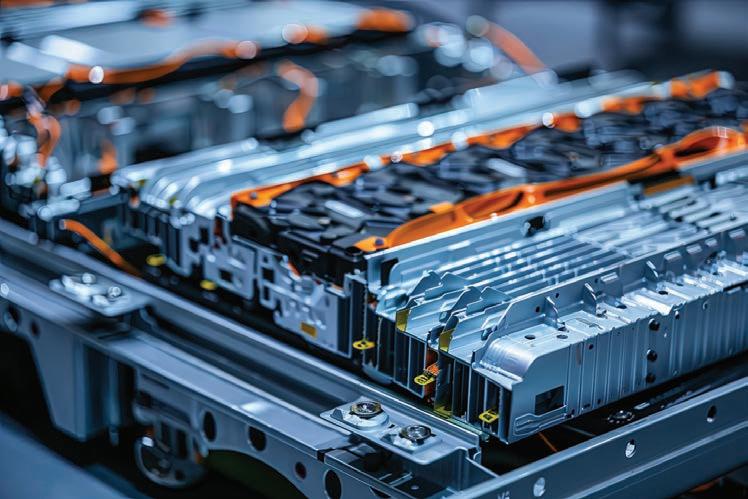
rises, all three components of a fire are present, instantly igniting the battery. This is why the importance of temperature regulation must be prevalent and prominent.”
The reasons for the fires can be traced to multiple factors including, but not limited to improper charging of the battery, manufacturing defects, or even physical damage. Dr Azhar believes mechanical compromise as an external factor is the main reason for the fires. When the battery is cracked, the physical and chemical properties exude a larger outward reaction, which if it isn’t a fire, can result in one quickly. Even though they can be dangerous, the chances of one of these fires occurring in an EV are very rare.
Low chances
EV FireSafe is an organisation endorsed by the Australian Department of
Defence, who research EV battery fires and emergency responses. They have established the only detailed incident database for fires in EVs. Their database shows 18 percent of fires occur when vehicles were charging and two percent were within an hour of disconnecting from the charger. EV FireSafe found from 2010 to June 2023, only 4 fires happened to EVs in Australia. Globally, there were approximately 30 million EVs on the road, and 393 fires occurred.
Australian Automotive Aftermarket Association (AAAA) Marketing Coordinator Jos Roder says now that there is more demand for EVs in the market, workplaces need to be further trained on how to work with them.
“A lot of workers have been servicing hybrid cars for a while, so the concept isn’t totally new, but it’s just another level
Training in correct handling of lithium-ion batteries is the first step in keeping workers and the car safe.
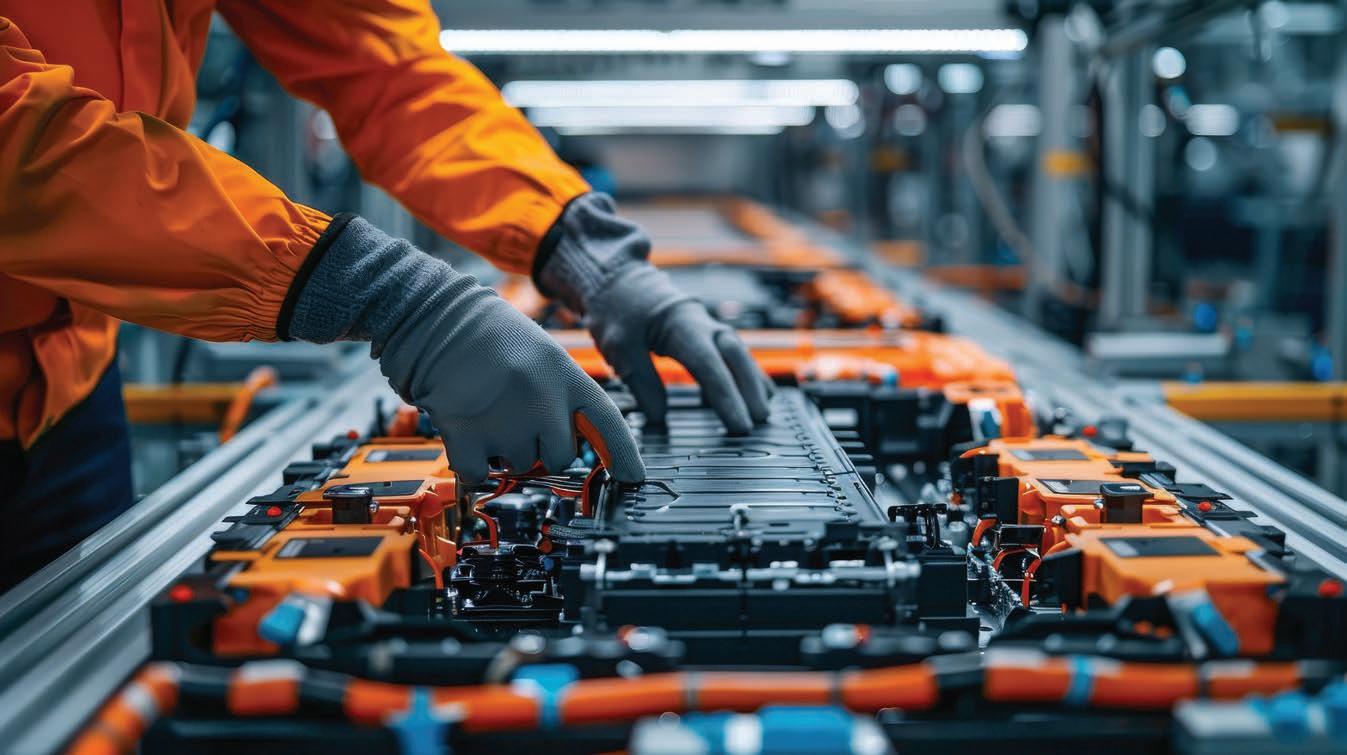
should be a crucial part of the New Vehicle Efficiency System. This will ensure not only that workshops and repairers are safe but that the repair experience for owners will improve.
They suggest that all repairers who will be working on EVs undertake basic safety and training courses on depowering, such as the AURETH101, and safely maintaining those vehicles when handling lithium-ion batteries.
Working on EVs can pose additional risks to repairers, with hazards including stored electrical energy, and battery electrolytes. SafeWork NSW say repairers have a chance of receiving electric shock if they do not take safety precautions when working on an EV, so depowering them before beginning work on their engines or bodies is critical. Safety steps include using the correct PPE and depowering the EV correctly.
Depowering, or disabling an EV is the process of isolating and disconnecting the battery from the vehicle. This is done to ensure the components of the battery cannot be energised, and then repairers have a safe platform to work on the EV without the chance of electric shock. It notes EVs can also generate electricity when the wheels rotate, so electric shock could be caused by physically pushing the vehicle in the workshop.
Experts say repairers should also get to know any model of vehicle well, and familiarise themselves with all its safety features, thermal management systems, and any sensors that could
can significantly increase the risk of it overheating, which is the first step of combustion reactions.
Leading industry-trainer I-CAR Australia also highly recommends courses for general technicians in the automotive repair industry to get better acquainted with depowering and working safely on EVs, including damage analysis and general handling of the parts.
I-CAR Australia recommends damaged EVs are isolated 15 metres, if possible, away from all other vehicles, until they can be assessed. This could prevent potential fire spread and ensures the battery is well ventilated to eliminate any hazardous gases if there is any damage. Ideally, this monitoring would take place for the first 48-hour period following an accident until assessment. Batteries should also be kept out of the weather to protect them from rain and moisture.
These precautions bring us back to the risk of fire, which however rare, is still worth taking precautions over for any workshop working on EVs.
“These fires are not like normal fires,” Dr Azhar says.
“There is research being undertaken to find the best way to stop these fires, but at this point, there are no specific techniques on putting out the flames apart from adding water, saline water being the best option.”
Experts stress that plenty of water is needed, because using a minimal
could potentially fuel the fire and cause it to intensify, instead of shutting it down. This is because of two things. One being the reaction between water and lithium, which produces flammable hydrogen gas, and the second being that water conducts electricity, which means spraying it on a battery powering an electric vehicle can lead to short-circuits or electric shocks.
“It is important to be aware that putting water on the fire will not stop it, only suppress it to ensure that it is not expanding. Keeping the fire burning, at as low a flame as possible is the best and safest way to regulate the fire.”
Other forms of fire suppression include Class D fire extinguishers, or dry chemical fire extinguishers which contain sodium chloride powder that combats the fire by melting to form an oxygen-excluding crust over the fire, not allowing it to grow. After the fire is out, it is common to need to deal with the toxic fumes it leaves behind. The fire releases a combination of smoke, carbon monoxide, hydrogen fluoride, and hydrogen chloride. All these gases can be hazardous to health when inhaled in significant quantities.
EV FireSafe offers free training resources on their websites (section 05.6) for education on EVs.
More information on courses is available through I-CAR Australia, and the automotive trade organisations (MTA’s) in each state, and nationwide (MTAA).
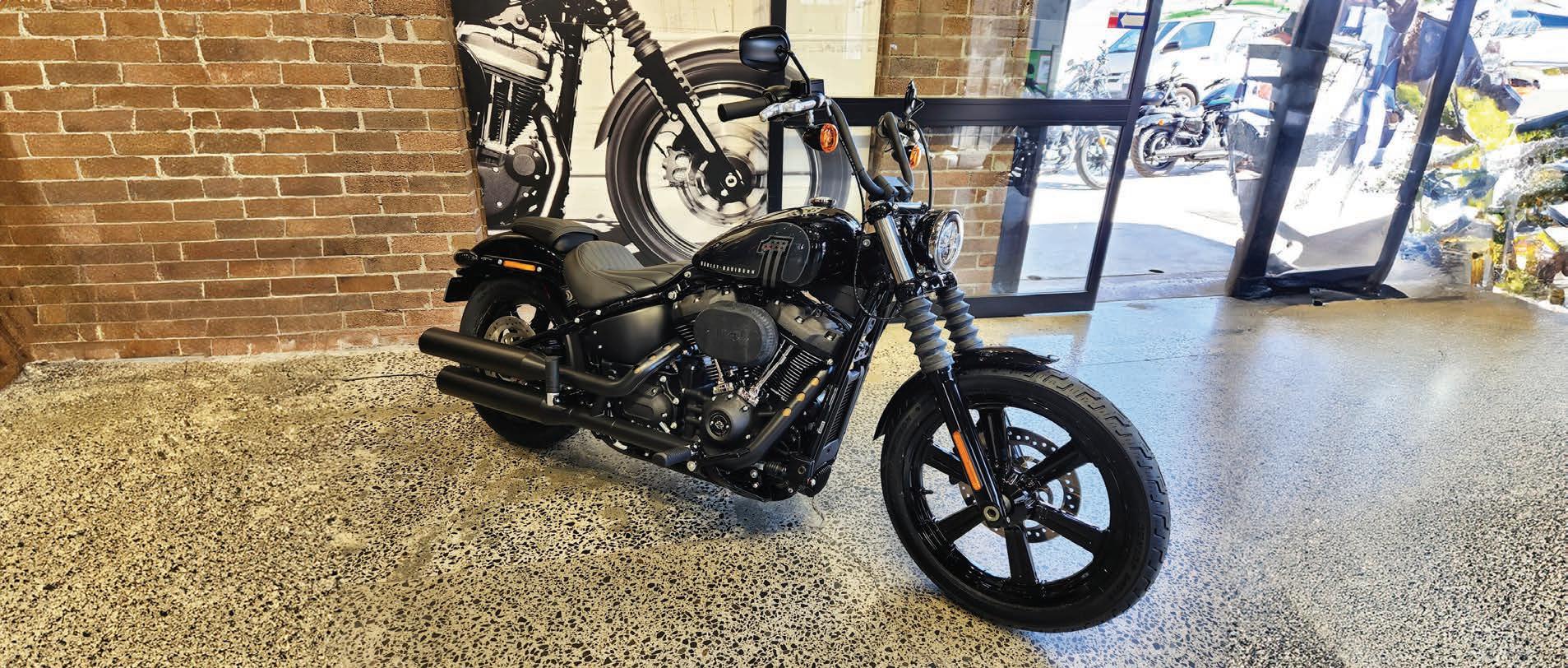
Dreaming of the weekend? Now the work you do on a weekday could help give those leisure hours an extra bit of grunt with a dream machine on offer.
The SAPE Group have teamed up with major supplier 3M to offer workshops that extra bit of incentive in the form of a Harley Davidson over the next two months.
The Harley Davidson 2024 Street Bob 114 is valued at $25,500 with $1500 in accessories to compliment the budding easy rider.
SAPE Group Trade Customers will need to make a minimum purchase of $500 on 3M products within a single invoice during the months of October and November 2024.
Each qualifying purchase will grant one entry into the draw and multiple entries can be obtained through additional purchases.
The lucky winner will learn if they are free to fly on 29th November 2024.
Full Terms and Conditions on the SAPE Group website.
Navigating the uncertainties and risks associated with using non-genuine parts is one of the daily concerns for many collision repairers and the leading motor trades association is hoping a new guide will shed light on this key part of the supply chain.
The Motor Trades Association of Australia guide aims to give legal guidance on how repairers can make the most informed and best decisions, and how to communicate this with both the vehicle owners and the insurance companies.
The MTAA partnered with the Australian Motor Body Repairers Association (AMBRA) and HWLE Lawyers to address the critical issue.
This is the first in a series of guides aimed at giving repairers the knowledge to navigate the complex landscape of insurance demands, particularly focusing on the use of non-genuine parts in vehicle repairs.
The guide notes that non-genuine parts can offer “practical and cost-effective solutions”, for collision repairers but the parts “should be approached with caution”.
“If you choose to use non-genuine
parts, ensure they meet quality standards, comply with regulations, and are utilised with the customer’s informed consent,” it advises.
“By carefully evaluating these factors, you can make informed decisions about when and how to incorporate nongenuine parts in vehicle repairs.”
MTAA CEO Matt Hobbs says the investment in the guides was part of the leading automotive group’s commitment to collision repairers and giving them resources to confront difficult decisions.
“This guide is a crucial resource for collision repairers facing pressure from insurers to use non-genuine parts,” Hobbs says.
“We aim to empower repairers with the knowledge they need to make informed decisions that protect their businesses, and their customers, and maintain the highest standards of vehicle safety and performance.”
The release of this guide marks the beginning of a series designed to clarify repairers’ legal rights against unreasonable or prohibited insurer requests, the MTAA notes.
Key Highlights:
1. Legal Rights and Risks: The guide
outlines the legal rights and potential risks for collision repairers when using non-genuine parts, providing a comprehensive framework for decisionmaking.
2. Step-by-Step Approach: Repairers are advised to follow a structured process, including reviewing agreements and Product Disclosure Statements, assessing safety and quality risks, and considering legal and financial implications.
3. Communication Strategies: The guide emphasises the importance of clear communication with insurers and customers, including obtaining informed consent and proper documentation.
4. Industry Standards: It reinforces the commitment to maintaining high ethical standards in the collision repair industry and the importance of upholding manufacturer specifications.
5. Dispute Resolution: Information on how to handle disputes with insurers, including reference to the Motor Vehicle Insurance and Repair Industry Code of Conduct.
The full guide can be accessed at MTAA.com.au

In an early sign that the automotive industry may be winning back the hearts and minds of the next generation of recruits, motoring advocacy bodies are reporting increased interest and numbers
The Motor Trade Association SA/NT reported a record turnout of more than 500 students, teachers and parents at a recent Automotive Careers Day.
The event showcased seven interactive automotive stations with hands on activities for the students that included specific collision-repair skill sets.
The displays featured an in-booth spray gun experience, panel-dent removal and spot welding, paint mixing along with a range of virtual reality vehicle service and painting experiences.
Other mechanical skills and arrange of classic and emergency vehicles were aimed at displaying the breadth and diversity within the industry.
The turnout follows positive results reported by the Australian Collision Industry Alliance, which reported multiple expressions of interest from people at their careers displays in Townsville, Brisbane and Perth.

potential recruits with businesses, in the led up to more career events in Cairns and Tasmania.
MTA SA/NT CEO Darrell Jacobs says the two-day event in Adelaide had succeeded in changing the perception about what rewarding career options in automotive looked like.
“By opening up our facilities and providing hands on experiences to young people and their influencers, we are opening their minds to the diversity of rewarding pathways available,” he says.
Sophia Hamilton says the event was not only relevant for students in seeing what they could potentially be working with but was also enjoyable for them.
“The energetic workshop, with its stateof-the-art equipment and apprentices actively training while we toured, gave them a clear picture of what their apprenticeship experience could be when they go to trade school.”
The MTA was promoting the message ‘VET is a game changer’.
One of Australia’s leading collision repair groups has announced its next phase of growth, with its network expanding to New Zealand.
One of the largest networks in Australia, with more than 110 outlets in every state in the mainland, Car Craft is now taking its successful model across the Tasman, welcoming a foundation member into the fold, Rob Braun with his Main Autocentre in Auckland.
The group has a unique model that it has built up since its origins in WA in 1987, based on a network of independent repairers supported by the Car Craft Group. The network is owned and driven by its members who elect a Board of Directors each year.
Group CEO Peter McMahon says it
was thrilling to be offering their model of success to a new market and they were now seeking expressions of interest from reputable collision repairers who want to learn more about how the network operates.
“We are excited to branch out to New Zealand and be working with a group of business owners who are likeminded individuals motivated to offer opportunities to fellow independent body shop owners across the country,” he says.
“This a great opportunity for owners who are keen to keep their independent identity while being a part of something much larger, offering networking opportunities, opening doors to advantages a single operator sometimes cannot access.”
Foundation Member Rob Braun explains why New Zealand needs an organisation like Car Craft Group.
“If professional independent Kiwi businesses are to compete, prosper and, over time, build company assets of tangible value in New Zealand’s fast evolving collision repair industry, there really is no other option but to build and support an organisation such as Car Craft Group,” Braun says.
“The work on the project has been carried out over several months and we are excited to see our brand further expand across to New Zealand,” says McMahon.
“The NZ business will follow the successful format developed by Car Craft Group over 38 years in Australia.”
Everything repairers need to know about auto-glass, will come together under one roof with a specially dedicated show in November.
The latest products and technologies from leading auto glass manufacturers and suppliers, networking opportunities and learning about the latest trends are just some of the highlights making it a must-visit event for anybody in the field of repairing auto glass.
The Auto Glass Association event will be on Saturday, November 9, in Melbourne, the second after it began in 2023. This year’s event will have more exhibitors and has some big names behind it, including Platinum Sponsor National Auto Glass, along with National Windscreens, Sika Australia, and Merbenit who are lining up to back it.
President at AGA Rick Janssen, says the partnerships underscores the importance of innovation and excellence in the auto glass industry.
“We are incredibly excited to host the 2024 Auto Glass Trade Show and grateful for the tremendous support from our sponsors,” Janssen says.
“This event marks a significant step up from our first industry event in 2023,

featuring a range of new exhibitors. The AGA hopes to grow this event each year, encouraging more exhibitors and visitors. One of the auto glass industry’s key objectives is to bring the community together and create a unified voice.”
National Auto Glass Supplies CEO Maggie Lo says they are proud to be the Platinum Sponsor of the key industry event.
opportunity for industry stakeholders to come together, exchange ideas, and explore the latest advancements in technology and service.”
Another sponsor, National Windscreens CEO Campbell Jones also spoke about the opportunity provided by the event.
Honda Australia has been slapped with the first fine from the ACCC for allegedly breaching the information sharing rules set up to give repairers access to information under the ‘right to repair’ scheme.
The ACCC issued it with an $18,780 infringement notice for an alleged breach of the Motor Vehicle Service and Repair Information Sharing Scheme, for reportedly failing to provide independent repairers the option to purchase more affordable daily or monthly subscriptions since 2022 up to May 2024.
Under the scheme, OEMs are required to provide information for conducting diagnostics, servicing or
“As leaders in innovation and excellence, we recognise the importance of fostering a strong community where knowledge sharing, and collaboration thrive. This event provides an invaluable repair activities to repairers at a price that does not exceed the fair market value. Subscriptions for repair and service information from OEMs must also be offered on daily or monthly basis.
“Providing repairers with flexibility and choice in how they access information under the MVIS scheme is fundamental to increasing competition and consumer choice,” Acting ACCC Chair Catriona Lowe says.
Under the landmark law established in 2022 it is illegal for car companies to withhold information from qualified independent mechanics.
The Australian Automotive Aftermarket Association, who
“As an industry member in a significant growth phase, supporting the 2024 Auto Glass Trade Show aligns perfectly with our commitment to the industry. It offers a prime opportunity to connect with other leaders and innovators, helping to drive forward the standards and capabilities of our sector.” championed the legislation, says it has been reassured that the scheme is functioning as intended.
“This game-changing law has been critical for Australian consumers and independent service and repair workshops, but to maintain its integrity, it must be continually monitored and upheld, with compliance ensured for any breaches,” AAAA CEO Stuart Charity says.
He says the ACCC’s enforcement action underscores that the law is being closely monitored, and a proper compliance process is in place.
The ACCC will also release updated industry guidance in the coming months about the MVIS scheme.
The Genuine Parts Company has added Auto Parts Group to its portfolio as a specialist supplier of genuine, certified and aftermarket automotive collision repair parts in the latest industry acquisition.
Melbourne-based GPC Asia Pacific will now operate APG as a dedicated collision repair division alongside its existing automotive parts businesses, which include Repco, NAPA, Rare
Spares, Sparesbox, and AMX Super Stores.
GPC Asia Pacific, one of Australasia’s largest industrial and automotive aftermarket parts and service suppliers, made the announcement last month and says APG’s operations would continue unchanged under the new ownership.
Auto Parts Group currently employs more than 300 staff, operates five distribution centres across Australia
and supply more than 47,000 different product lines to around 3,500 collision repairers.
James Knox will also stay on and continue to lead the business as Executive General Manager of APG and become a member of GPC Asia Pacific’s Automotive Leadership Team.
APG will now enjoy the advantages of GPC Asia Pacific’s investment strength and global supply chain, the announcement said.

Digital Automotive at Automechanika in Frankfurt.
The deal will commence in January 2025 and bring Infopro’s information services and diagnostic solutions to a wider range of repairers, its members and businesses across the region.
VACC Chief Executive Officer Geoff Gwilym has welcomed the renewed partnership and what it will bring to repairers.
future of the mobility sector.”
The renewed partnership brings expanded data coverage to VACC members who will gain access to additional automotive data categories, including technical information for electric and hybrid vehicles, trucks, motorcycles, and tyre and wheel data.
From January 2025, VACC will integrate Vehicle Registration Lookup technology into its products, streamlining
GPC Asia Pacific is also backed by parent US giant, Genuine Parts Company, a leading global service provider of parts that has more than $23 billion in annual revenues, has a global network of 10,700 locations in 17 countries, and employs more than
GPC Asia Pacific has acquired 100 per cent ownership of APG from the company’s founder, Stephen Campbell. In a statement, Campbell said GPC was the best home for his company’s future
the repair process for end-users
“These enhancements to the VACC MotorTech programme will ensure that automotive repair professionals have access to the most up-to-date and comprehensive technical data available. This access is crucial for maintaining high standards of service and repair in an increasingly complex automotive landscape.”
The wider information access aims to give repairers better access to information on the changing car parc, particularly with the rise of electric and hybrid vehicles and ensure their business viability as the industry changes.
More information is available at VACC MotorTech

Industry and tertiary training partnerships are an automotive strong point and when skills are in high demand, the need to give students skills in the latest techniques on up-to-date gear can even further boost the wider industry.
The SAPE Group Equipment Division recently partnered with TAFE NSW North Wollongong for a series of training sessions aimed at widening student and staff knowledge of workshop systems.
SAPE described it as a ‘fantastic collaboration’ with enthusiastic participation in the sessions that were both detailed and professionally engaging.
TAFE NSW head of Automotive Refinishing Ian Chalmers says the partnerships can help upskill existing students and deliver qualified technicians into the future.
“The current state of the trade means that panel beating and spray-painting roles are in high demand, with NSW currently experiencing a skills shortage according to the Skills Priority List,” Chalmers says.
“Furthermore, nationwide demand for vehicle painters is expected to increase by 17 per cent over the next five years.
At TAFE NSW, we’re proud to continue consistently delivering these courses for apprentices looking to build their career in the industry.”
“Once a student completes their initial apprenticeship, there is always scope for advancement and retraining with TAFE NSW. It is great to see learners continuing to build their skills and we’re committed to creating highly motivated and skilled tradespeople that will meet the changing needs of the auto body trade.”
The SAPE Group was able to provide training on the Spanesi 106 Alignment Bench and Touch measuring systems after its installation last month.
“The installation of the new Spanesi alignment system allows us to improve delivery for our students,” Chalmers says.
“The initial training in the Spanesi alignment system allows apprentices to take measurements of a vehicle without the need to anchor it to the alignment bed, saving time on setting up a vehicle. This is beneficial for quick assessments, such as for a quote or to see if the vehicle is beyond economical repair.
“This is a multi-fit bench, without the
need to buy expensive add-ons to fit different vehicles, and the upgrades are free for the life of the bench, unlike other systems. The OEM accreditation, for use with vehicles, is also a benefit for the shop owner and the owner of the vehicle, as it ensures that every vehicle is returned to the OEM pre-accident condition.”
TAFE and SAPE will now discuss the possibility of further sessions, with SAPE offering to provide further training and support to teachers and students.
“After the initial session, students can go back to their respective shops and comfortably use the system. The simplicity of use has seen all TAFE NSW students being able to not only use the system but understand it as well.”
Chalmers says the development of these skills reflects well on the future of the industry.
“As a trades person who has been in the industry for over 40 years, I have always enjoyed the trade and the fulfilment when returning a car back to pre-accident condition. It’s great to see the next generation of workers coming through TAFE NSW, learning the skills needed to excel in the industry.”
Toyota’s experience and prescience in the alternative powertrain space continues to pay off in hybrid sales, particularly the RAV4.
The Federal Chamber of Automotive Industries August figures show another huge jump in the uptake of hybrid technology, up 45 per cent from last year, but also show a sharp drop off in EVs.
Battery EV sales dropped to 3434 new vehicles, 50 per cent down on August 2023. The total new sales of EVs in 2024 remained 1.4 per cent up on 2023. However, these numbers no longer record the sale of Tesla and Polestar.
The hybrid trend which has dominated the headlines in 2024 continued in August with Toyota’s RAV4 achieving its highest monthly sales in the model’s 30year history and again topping the new vehicle charts for August.
Ninety-five per cent of the 6,712 new RAV4s sold were hybrids and was the biggest contributor to Toyota’s marketshare of 21.9 per cent.
In April the mid- sized SUV toppled
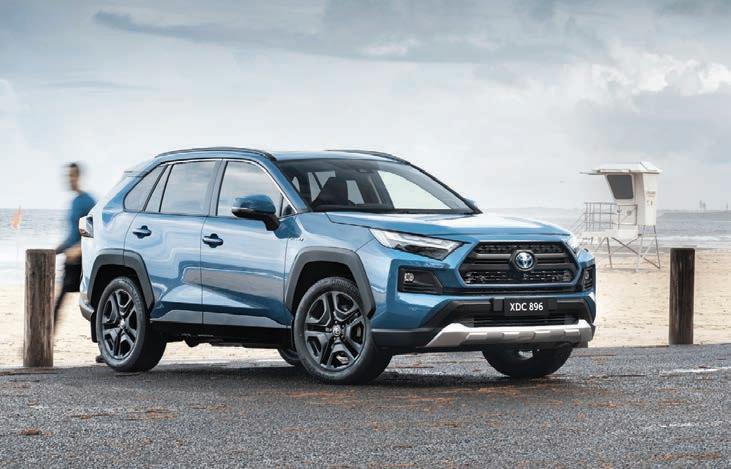
the duel between the Ford Ranger and the HiLux that had dominated the new vehicle sales charts for the past year and has now held the spot three times.
FCAI Chief Executive Tony Weber says the total sales for August, the second highest ever, were a good result despite August 2024 being down by 10.6 per cent on last year’s August number.
“Consumers continue to embrace low emission vehicles with hybrid sales
One year into testing with on-road scenarios, Australia’s leading motoring association has found a majority of cars continue to use more fuel than lab tests and almost half break emissions rules.
Its latest collection of vehicles found 15 out of 20 used more fuel, including the Ford Ranger, one of the country’s most popular vehicles, and only five used less or the same as the mandated laboratory testing results.
The government sponsored RealWorld Testing Program, conducted by the Australian Automobile Association, found some cars tested over the year consumed as much as 31 per cent more than the laboratory figures.
21 of the 58 vehicles tested in the first year also produced on-road emissions
that exceeded current or upcoming Australian regulatory lab limits for toxic tailpipe emissions.
The AAA is now sharing its results and with international organisations including Green NCAP, the International Council on Clean Transportation and the Federation Internationale de l’Automobile.
AAA Managing Director Michael Bradley says consumers could now distinguish which vehicles produce fuel consumption and emissions in line with lab tests reported by carmakers and the many that do not.
“That can have real impact on consumers and fleet buyers,” he says. “If people rely on the lab tests, they could end up with a car that costs more to run or is dirtier than they expected.
up 44.9 per cent on August 2023 while sales of plug-in hybrid vehicles are up 119.8 per cent.
“However, in line with the experience in many global markets, sales of battery electric vehicles are disappointing,” Weber says. “This is despite the supply of battery electric vehicles increasing significantly with more brands and EV models having entered the Australian market.”
“The results raise a question for regulators about whether car dealerships should be required to reveal real-world testing results to consumers at point of sale.’’
The $14 million, four-year Real-World Testing Program is run by the AAA and funded by the federal government.
It was created in response to the 2015 Volkswagen emissions scandal, which showed that emissions regulations around the world were incentivising carmakers to optimise their vehicles’ fuel consumption and emissions performance for the laboratory tests being used for regulatory compliance. Bradley says the program had now tested enough vehicles to let buyers examine the results for multiple vehicle models in the same class.
with John Yoswick
‘Automated estimating’ has its faults and its critics but US repairers also see some areas for improvement and time-saving.
A panel of US collision repairers agreed there’s still a long way to go before current systems that can help automate some aspects of estimating are actually able to produce something closer to the complete “repair plan” that shops need, but they do see the systems still offering some potential time-savings for workshops.
Darrell Amberson of the LaMettry’s Collision chain of shops in the state of Minnesota says he’s seen improvement in the systems that help repair planners locate the necessary automaker repair procedures for a given job. But he’d like to see so-called “AI-enabled” estimating systems get closer to creating detailed repair plans rather than just the automated preliminary estimates they do today.
“There’s a whole bunch of operations that you have to know about to look for that are not included or that may require some judgment,” Amberson says during a discussion at a recent Collision Industry Conference in the US.

repair information.
more and more of those automated?”
The current photo-estimating systems, he says, primarily automate only the “write what you see” portion of what’s needed, which is likely more helpful for insurers than shops.
“I use the analogy of an egg in the bag,” Amberson says. “If you put an egg in a bag and I smash it, and I’m
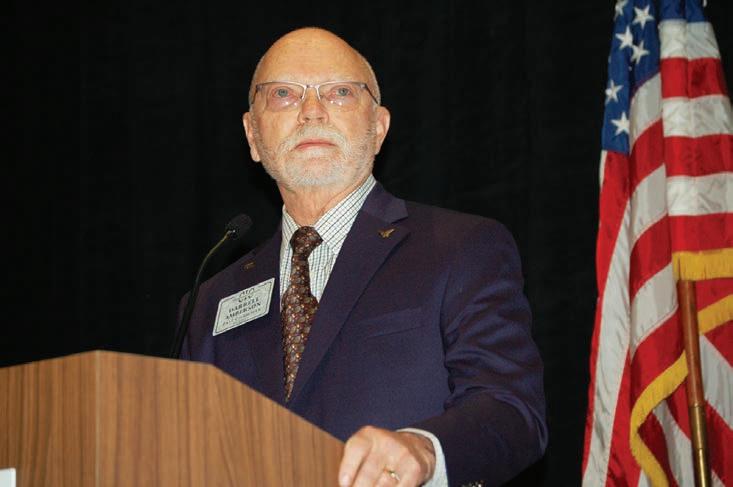
see it needs a bag, but really, I know it needs an egg, too. Couldn’t we get to that point that the initial estimates could recognise that as well.”
While not disagreeing that current automated estimating systems aren’t perfect, some collision repairers see them as potential useful within their shops.
Andrew Batenhorst, a shop manager in the state of California, says he uses a tool in his estimating system’s mobile app to quickly create initial estimates.
“They have a lot of data in their system that they can use to identify some of the low-hanging fruit to let us make a very quick determination what a repair cost might be,” Batenhorst, says. “It requires taking only a handful of photos, and a few keystrokes on your phone.”
Creating an initial estimate quickly
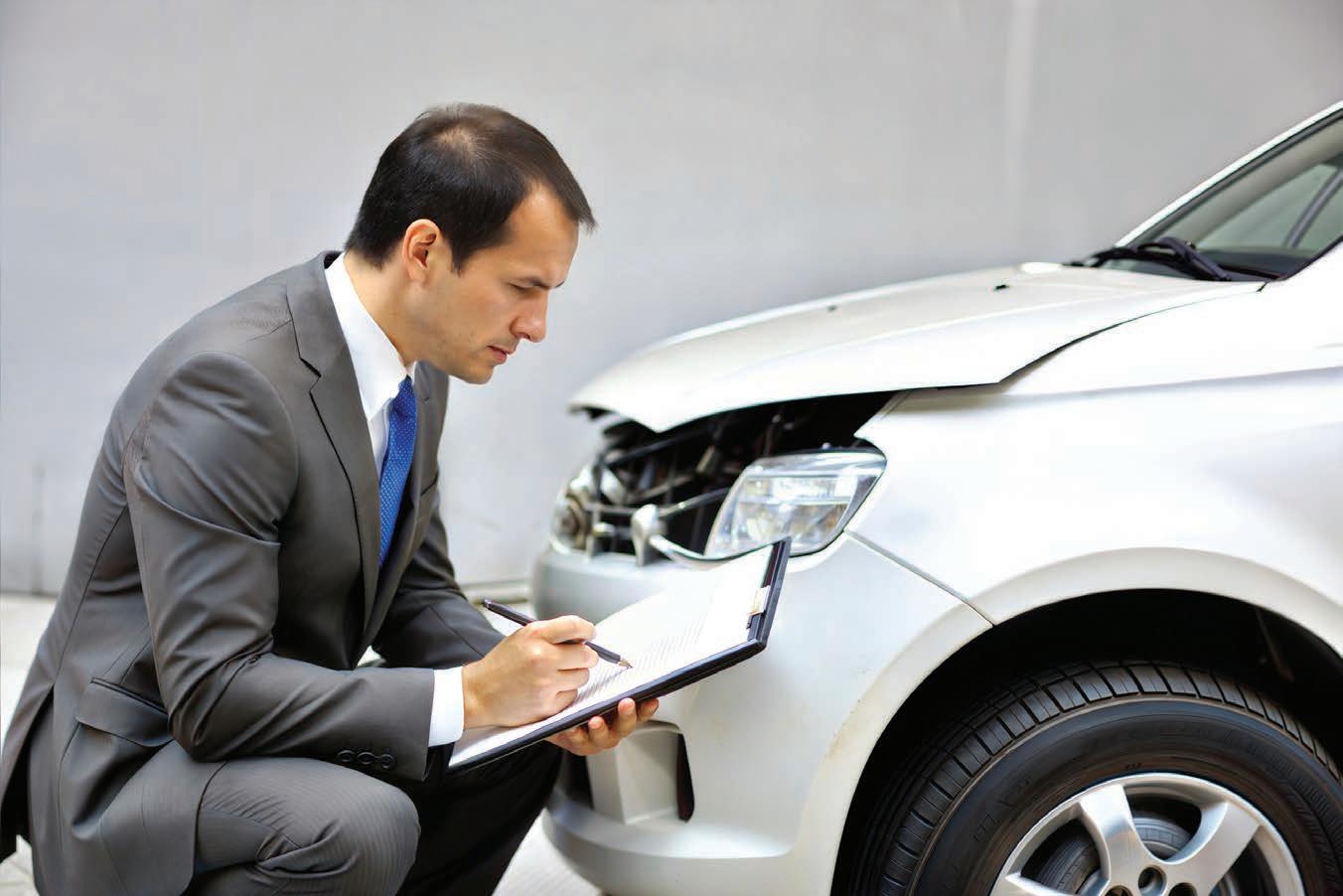
trying to dig deeper into those repair instructions,” Batenhorst says.
Michael Bradshaw of K&M Collision in North Carolina, agrees that the app creates only an initial estimate, not the full repair plan needed once a job comes into the shop. But he’s using it to quickly identify potential total losses or when a customer comes in for an initial drivable estimate.
“We really don’t like to do those because we feel like it’s an enormous waste of time,” Bradshaw says. “And it’s not accurate because the OEM research and the vehicle scans that have to take place, and all the additional damage that’s going to be uncovered once the vehicle is disassembled. So we’re kind of training our [customer service representatives] to explain to customers, ‘We’re going to do an AI-generated estimate that is extremely preliminary for you to get your claim process started,’ and then explain the process as far as a repair appointment, a disassembly, and a repair plan that’ll actually determine a proper cost of repair.”
The app also is an easy way early in the process to triage vehicles based on the level of damage, he says.
Batenhorst says his shop has also used the app when checking a customer vehicle in to quickly quote for repair of unrelated damage. As a
industry to shy away from technology because we don’t understand it or because we shy away from change,” Bradshaw says. “But this is something that anyone can use, and it’s going to save 15 or 20 minutes at the onset of each file, and a lot more time in situations when it identifies a total before you get more involved with that.”
Aaron Schulenburg, executive director of the Society of Collision Repair Specialists, national trade association in the United States, says the discussion is a good reminder that while this type of app isn’t a complete solution for estimating, it can potentially serve a function within a shop.
“Being a repair planner is a difficult job,” Schulenburg says. “Can we make their life a little bit easier to let them focus on the things that are becoming more critical in their role rather than some of the more routine functions that could be replaced through some automation.”
For his part, Amberson sees such estimating tools as only one of the opportunities for increased automation in the industry. He says about 15 years ago, he sent a painter at the company
thought, he’s right, that could happen. We’re at a point now I’m almost thinking: Why hasn’t it happened? Why can’t we use robots in there, while maybe he’s sitting at some control, and [the process] is environmentally safer, cleaner, potentially more efficient. What is it going to take before we can get there, that we can automate refinishing?”
He says he’s seen some products that automate some basic welding.
“How far away are we from automating those sorts of things in the shop? I don’t think we’re anywhere near where we could be,” Amberson says.
He says automakers currently send auditors into certified shops to verify work is being done according to factory repair procedures.
“But there’s technology out there right now that can put sensors into welders and other devices that can verify and report information without a human presence,” he says. “I’d like to think one day we’re going to get there.”
He believes shops aren’t doing as much measuring of vehicles as they should be, and that, too, offers an opportunity for more automation to make the process easier and faster.
“There are just so many things that could be happening and we’re not quite there yet.”
The trade war over EVs from China has continued across the globe with the EU making some concessions but the US locking in its high tariffs.
In Australia, new Chinese brands continue to arrive in anticipation of the New Vehicle Efficiency Scheme that seeks to increase the range of low emissions vehicles available and could well change the nature of the overall car parc.
The last Australian tariff of five per cent was abolished in 2022. Now zero and low emission cars, below the luxury car tax threshold for fuel efficient vehicles, are exempt from import tariffs and fringe benefits tax.
Chinese cars, including Tesla, are now the third largest country of origin for new vehicles in Australia.
Meanwhile Reuters reported the Biden administration in the US has locked in a 100 per cent duty on
PPG‘s innovation in anti-corrosive technology, as well as minimising the footprint of their products, has gained them recognition at one of the industry’s top awards.
PPG and Toyota North America earned the runner-up award in the ‘Sustainable Process’ category for the use of PPG Enviro-Prime EPIC 200X electrocoat at Toyota’s Motor Manufacturing Canada North Plant.
The Altair Enlighten Award, from IT firm Altair Engineering recognises sustainability and lightweighting advancements in the automotive industry.
The advanced technology aims to enhance corrosion protection for automotive bodies while significantly reducing environmental impact through lower material usage and energy requirements.
The product and application process enable a total reduction of 3,500 metric tons of CO2 emissions per year at the
Chinese electric vehicles, to protect its strategic industries from what it says are China’s state-driven industrial practices.
The tariff on Chinese EVs, and other tariffs including 50 per cent on solar cells and 25 per cent on steel, aluminium, EV batteries and key minerals, took effect on Sept 27.
Canada followed the US in announcing huge tariffs of 100 per cent for Chinese made EVs, including Tesla.
Canada will also impose 25 per cent tariffs on imported steel and aluminium from China according to Reuters. Canadian imports of automobiles from China grew four-fold in a year to 44,356 in 2023, after Tesla started shipping Shanghai-made EVs there.
At the same time, the EU will lower proposed final tariffs for Tesla and trim rates for other electric vehicles from China after considering submissions by the companies, Reuters reports.
Tesla’s proposed tariff rate will drop to 7.8 per cent, from 9 per cent, it reported. For BYD, there was no change to its 17 per cent tariff. For Geely, the new rate would be 18.8 per cent from a previous 19.3 per cent.
The peak EU rate of 35.3 per cent would apply to SAIC and other companies not cooperating with EU investigation, it noted.
These tariffs are on top of the EU’s standard 10 per cent import duty for cars.
China responded by saying the EU was obstructing open dialogue on the issue.
“The European Commission ignored the sincerity and efforts of the Chinese industry and put forward a proposal for a flexible solution that it intends to reject the Chinese industry without indepth communication, which is deeply disappointing,” a Chinese commerce ministry spokesperson said.
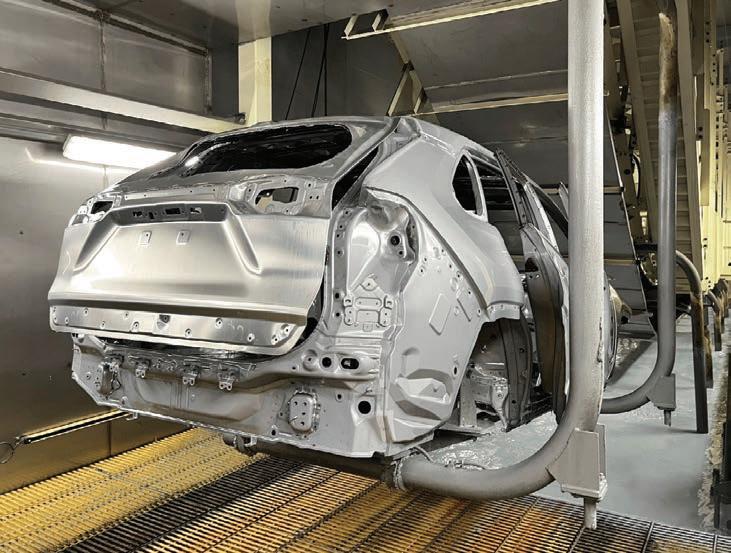
the site in 2023.
The amount of applied product is reduced by 0.6 kg per vehicle, while the application process saves 5.6 million kWh of energy and 1.8 million gallons of water per year.
PPG Vice President, Americas,
Carroll says the award was recognition of a fruitful partnership with Toyota.
“PPG’s focus on sustainability helps automakers and Tier suppliers reduce their environmental impact in the midst of ever-increasing corporate targets and regulatory requirements.”
EV repair rates continue to increase in the US as more appear on the roads, but their write-off levels remain similar with ICE vehicles.
This was one of the findings of the latest Plugged-In: EV Collision Insights report from Mitchell, an Enlyte Company in the US, that gives a glimpse into what a future Australian repair landscape might look like as EV numbers increase.
Claims frequency for repairable, collision-damaged battery electric vehicles rose to 2.5 per cent of all collision repairs, a yearly increase of 45 per cent in the US where they make up 9.3 per cent of new sales, slightly higher than Australia. While EV sales have slowed slightly in both the US and Canada the report found, hybrids have grown, and their claims rate has also grown accordingly with a frequency of 3.8 per cent in the US. EVs remain on average more costly to repair, according to the Mitchell report. Q2 average claims severity for repairable
A new rule introduced in the US for vehicles to require automatic emergency braking by 2029 has met with some resistance but the decision has also been celebrated as able to save lives and reduce crashes.
AEB was one of the first ADAS systems to be considered in Australia through the Australian Design Rules ADR98. Despite the US taking the lead on AEB requirements, the Australian Government is yet to announce any similar developments.
Consumer Reports Vehicle Technology associate director, Kelly Funkhouser highlighted the support for the legislation that will require AEB in all new US cars by September 1, 2029.
“We know they have a proven safety record. Vehicles with AEB have a 50
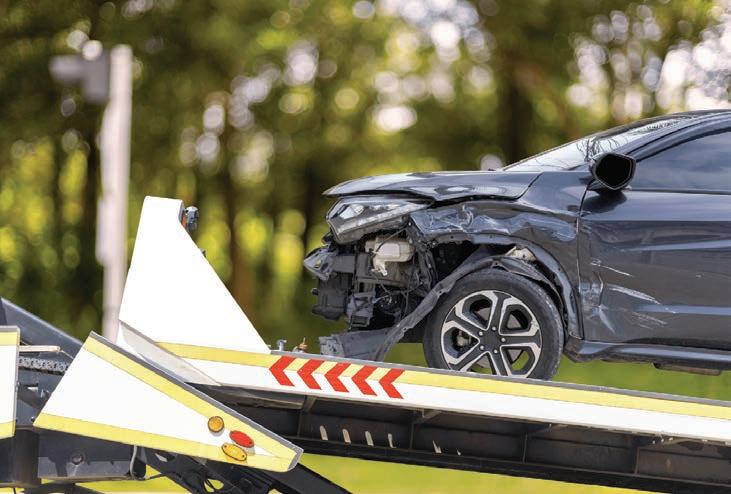
EVs costing was US$5,753 compared to US$4,806 for ICE automobiles, a difference of US$947 or 20 per cent.
Hybrids have a two per cent higher severity based on estimates data from the first half of 2024, while plug-in hybrids exhibit “a greater severity delta compared to the ICE population,” and saw a 2.5 per cent cost increase in the
US due to their close similarity to BEVs. However, the number of EVs written off was 9.16 per cent in the second quarter report (down 8 per cent from Q1 2024). This compared to newer ICE vehicles of similar complexity and cost to repair which were written off at a frequency of 9.45 per cent, about three per cent lower than Q1 2024.
per cent reduction in rear-end crashes on the road, according to data from the IIHS [Insurance Institute for Highway Safety], as compared to vehicles that don’t have it,” Funkhouser told the Brake Report magazine.
“There is still room for improvement. They’ve only been around for a couple of decades compared to a lot of other automotive technologies. But that doesn’t mean they’re still not good overall.”
The National Traffic Safety Administration’s new Federal Motor Vehicle Safety standard will require AEB to engage at up to 90 mph when a collision with a lead vehicle is imminent, and up to 45 mph when a pedestrian is detected.
The Alliance for Automotive
Innovation asked NHTSA to reconsider portions of its new AEB mandate via a letter to Congress and emphasised the impracticalities with the speed requirements and available technology.
“We recommended NHTSA adopt a standard already in place in Europe that detects a potential forward collision, provides a driver warning, and automatically engages the braking system to avoid a collision — or mitigate its severity — through the use of existing crashworthiness systems designed to better protect road users,” the AAI wrote to Congress.
NHTSA believes its rule will significantly reduce rear-end and pedestrian crashes, saving at least 360 lives and preventing at least 24,000 injuries every year.
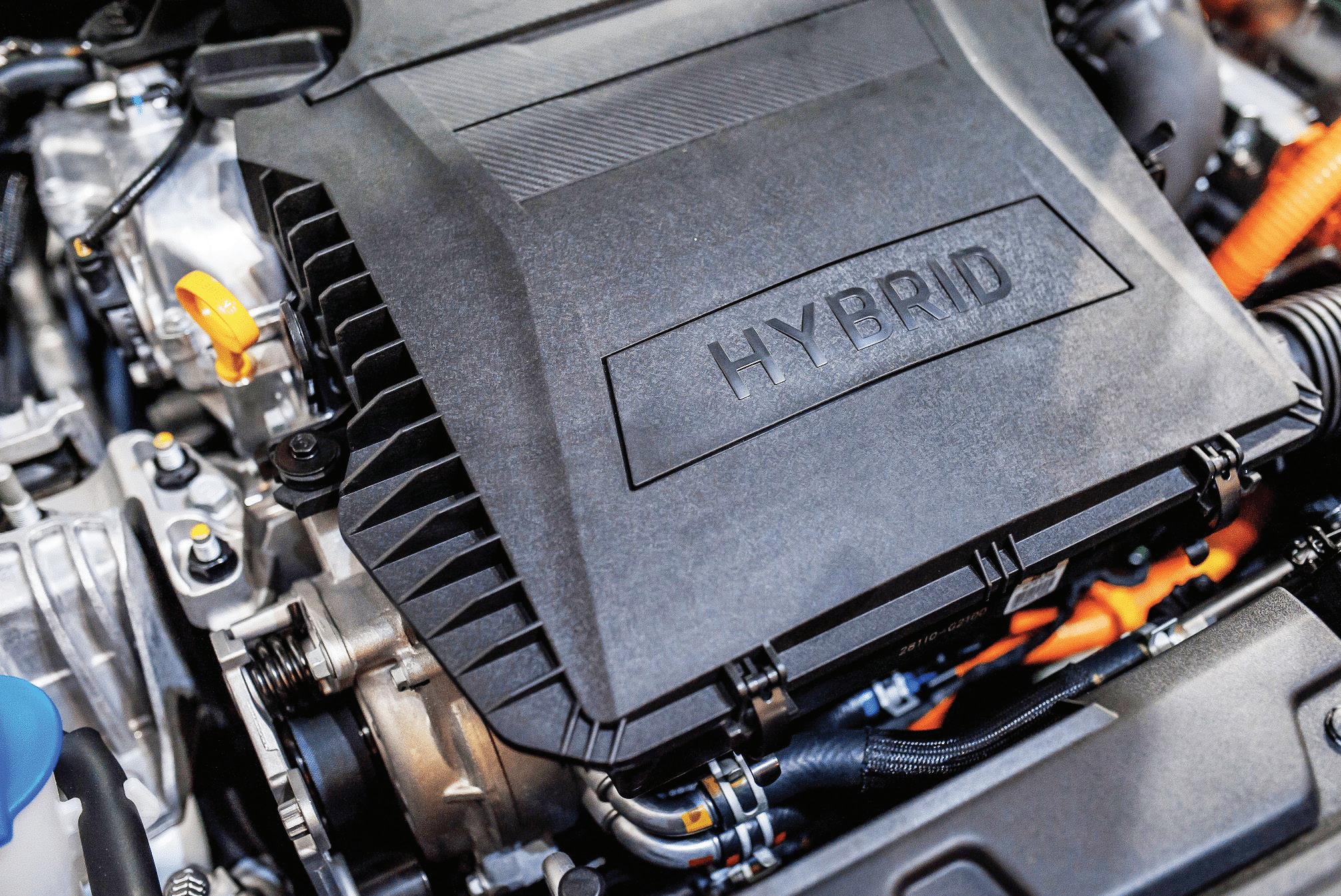
The surge in hybrid vehicles is predicted to continue across the region as consumers look for lower consumption and emitting vehicles.
GlobalData, a leading data and analytics company, predicts the hybrid EV powertrains will experience an annual growth rate of 5.9 per cent over the next five years from 2024 to 2029 across the Asia Pacific region.
The region is already a global leader in the adoption of hybrid vehicles with China, Japan, and India leading the way, as consumers recognise them as a practical and affordable alternative to ICE and full EVs.
In Australia, hybrid sales grew by 33.5 per cent, with the hybrid market share rising from 11.95 per cent to 14.93 per cent in Q2 2024.
This precedes the introduction of the New Vehicle Efficiency Standard in 2025 which will create more incentives for low emissions cars.
In another sign of how hybrids will shape the future car parc and what repair workshops see, the NVES is aiming for 30 percent of new vehicles to be full EVs by 2029.
GlobalData’s latest report, “Global Sector Overview & Forecast: Hybrid
Electric Vehicle Powertrains – Q2 2024” shows 10.0 million hybrids will be sold across the Asia Pacific region in 2024 and is expected to reach 13.3 million vehicles in 2029.
GlobalData, Automotive Analyst Madhuchhanda Palit says the popularity was being driven by the available technology meeting consumer needs.
“Despite numerous government initiatives aimed at encouraging consumer adoption of EVs, there has been a significant increase in the popularity of hybrid vehicles. This trend can be attributed to various factors, such as the minimal need for consumers to alter their driving habits,” Palit says.
“Hybrid vehicles, which utilise both petrol or diesel engines and electric motors, can operate solely on electric power for shorter distances. This feature is particularly advantageous in urban stop-and-go traffic, offering the benefit of zero tailpipe emissions. Additionally, the ICEs in hybrid vehicles can be used for longer distances, thus reducing the need for consumers to significantly change their regular driving patterns.”
The lag in charging infrastructure,
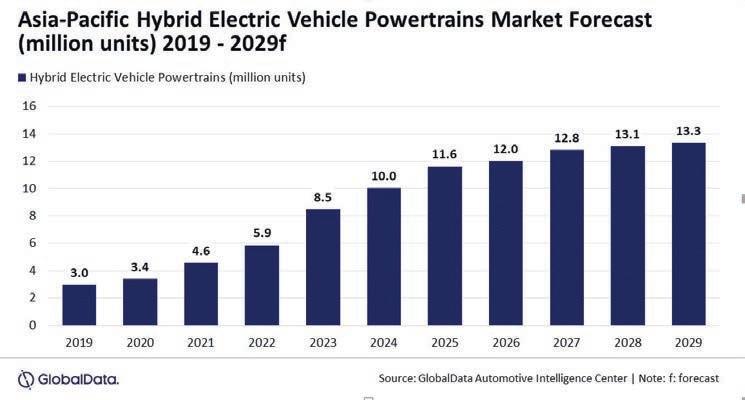
despite some government commitment, is causing consumers to look at what best suits their needs and OEMs are shaping their innovation efforts to meet the demand. OEMs are competing to introduce innovations that improve vehicle performance and sales, he says.
“Predictive energy management, a maturing innovation that has become well-established within the industry, involves the use of control systems and methods to optimise energy management in electric vehicles. The control system employs predictive algorithms to manage energy consumption, optimising the use of the electric motor and combustion engine.”
Key players in the sector, such as Toyota, Hyundai, and Volkswagen, are driving these innovations.
“For example, Toyota has recently filed a patent for a hybrid vehicle control device that performs a reduction process to limit fuel cuts in the engine and an increase process to raise the engine’s rotational speed during deceleration. These advancements underscore the industry’s commitment to enhancing the efficiency and appeal of hybrid vehicles,” Palit says.
“Manufacturers are adjusting to more stringent emission regulations, and consumers are increasingly considering hybrid vehicles as a viable alternative, being cautious of transitioning to BEVs due to inadequate infrastructure. In addition, the higher cost of BEVs is also weighing in on the decision making of customers in the APAC region.
“While governments commit to enhancing the EV charging infrastructure, the development of a comprehensive network remains a work in progress. In the interim, the rising popularity of hybrid vehicles is prompting manufacturers to pursue innovation, leading to improvements in efficiency and performance that are stimulating market expansion.”

Recent legislation passed in California to mandate speed assistance systems in new vehicles aimed at making roads safer, could set a precedent for a wider mandate.
Europeans have already adopted the the approach to speed enforcement, as all new cars sold from July 7th, 2024, need to be equipped with speed limiters.
The 2019/2044 ISA regulation was written by the European Commission following years of research into improving safety for drivers and other road users.
Australia is yet to enforce the speedlimiters in vehicles.
The California legislature recently passed a bill that will require speed assistance systems on all vehicles in the state starting in 2030.
The Senate and Assembly moved the
SB961 and it now awaits on Governor Gavin Newsom. If he signs the bill, California would be the first state in the US to require a speed assistance system in vehicles.
California’s bill requires every passenger vehicle, motortruck, and bus manufactured, sold as new or leased in the state to be equipment with “passive” ISA, the bill text says.
ISA is defined as an integrated vehicle system that determines the speed limit on the roadway that the vehicle is travelling on. The bill adds it utilises a brief, one-time visual and audio signal to alert driver each time they exceed the speed limit by more than 10 miles per hour.
OEMs are also allowed to include additional ISA, such as, vibrations or pedal resistance, or repetitive,
successive, or ongoing warnings each time a vehicle exceeds the speed threshold, the bill says.
It also says OEMs are allowed to use warnings for when a vehicle is travelling below the speed limit or at a threshold greater than 10 miles per hour.
The bill exempts emergency vehicles, certain motortrucks, motorcycles, motorized bicycles, mopeds and certain passenger vehicles from the requirement. It says the system should be capable of being fully disabled by the OEM or franchisee for emergency vehicles.
Crash data released by the National Highway Traffic Safety Administration earlier this year shows 18 per cent of all drivers involved in a fatal crash in 2022 were speeding at the time of the crash. It also says speeding was related to 29 per cent of all fatal crashes during that time.
In yet another sign of the changes taking place to independent repair shops, IAG NZ has continued with its growth plans, including adding another shop to its AMI RepairHub with an outlet in Queenstown.
The AMI RepairHub opened in the tourist hotspot on the South Island, following its acquisition and rebranding of Queenstown Collision Centre and making it the tenth outlet across the country.
Repairhub in Australia is another leading network of repair workshops, founded in 2019 in conjunction with IAG and the RACV and currently has 21 locations. IAG New Zealand is part of Insurance Australia Group.
In NZ, AMI RepairHub announced this first site in central Otago after establishing sites in Auckland, Hamilton, Wellington and Christchurch.
Manager Supply Chain and Hub Services, Dean MacGregor says the outlet will cut wait times for customers.

a collision repair service for our customers in the Queenstown and Wanaka area, who have been experiencing up to five weeks of waiting time for vehicle repairs. Our
the vehicle repair process for our customers.”
AMI Repair Hub Queenstown plans for average repair times of 4.5 days.
A recent survey has revealed the surprising habits and attitudes of Gen Z and Millennial drivers.
Despite being the most technologically advanced generations in history, Gen Z and Millennial drivers are edging towards traditional modes of transport and driving habits.
A new Enterprise Mobility survey found Gen Z and Millennials to be the top two generations driving on US and UK roads. The survey gathered data from the January 22 to the February 5, 2024.
The Enterprise’s first “On the Move survey found that drivers aged between 21-26 years are driving more than five years ago, compared to Gen X and Baby Boomers.
Enterprise Mobility global operations executive vice president, Will Withington highlighted the importance of staying informed about consumer perspectives on the current state of mobility.

“This survey represents a snapshot of how the public views a range of mobility trends. This helps us stay better informed as we work to develop and provide mobility solutions for our customers both today and in the future,” Withington says.
According to Enterprise, 73 per cent of Gen Z and Millennial drivers still expect privately owned vehicles will be their first transportation choice 10 years from now.
• 41 per cent of Americans are excited about the new technology behind autonomous vehicles
• Of those, 41 per cent, half said AVs could have the potential to “make travel easier for people who can’t or won’t drive
• And 40 per cent said AVs could “give people time to do other things in a car besides driving”
• 72 per cent, however, said they prefer human control of the car they drive or ride in.
“Although there is some initial
scepticism around AVs, we see that many consumers change their minds about the technology once they get a chance to experience it,” Withington says.
“As a global mobility leader, we are actively researching and testing new technologies, listening to preferences and concerns, and working to better understand how all of this might impact the future of mobility.”
According to Enterprise, the primary motivating factors for having an EV are fuel cost savings (44 per cent) and a positive environmental impact (34 per cent).
Enterprise noted questions remain about EV viability due to cost, inadequate charging infrastructure, and environmental impacts.
It also found 68 per cent of Americans, believe the US doesn’t have the proper infrastructure to support widespread EV adoption.
Related battery range anxiety was also the top deterrent from
driving an EV, the survey found.
“EV infrastructure looks vastly different across the US. The reality is that current charging infrastructure in most regions does not meet the needs of drivers with regard to availability, efficiency, reliability, and convenience,” Withington says.
Car share alternative
The survey found 45 per cent of US respondents said their commute would improve if it cost less money and another 28 per cent say it would improve if it caused less stress.
“Interestingly, a wide range of alternative transportation solutions exists to solve these commuting challenges — including car sharing and vanpooling,” Enterprise says.
The survey found that 22 per cent of respondents had not heard of some or all of ride share services.
“Whether people prefer to ‘share’ a car for occasional trips to the office, or they want to maximise their travel time by vanpooling with co-workers, there is a wide range of mobility solutions available to get them where they need to go.”
Big utes and pick-up trucks will come under closer scrutiny in their impact on pedestrians following a proposed design rule change in the US.
The National Highway Traffic Safety Administration (NHTSA) proposal would establish a new Federal Motor Vehicle Safety Standard requiring new passenger vehicles to be designed in a way that reduces the risk of serious-to-fatal injuries in pedestrian crashes.
The rule will apply to passenger vehicles with a gross vehicle weight rating of ten thousand pounds (4.5 tonnes), including multipurpose vehicles such as trucks, SUVs, and vans.
This follows 2022 data that shows 88 per cent of pedestrian fatalities occurred in single vehicle crashes. The fatalities of pedestrians struck by the front of a vehicle are most common for multipurpose vehicles (49 per cent) followed by passenger vehicles (37 per cent).
Insurance Institute for Highway Safety (IIHS) research last year also found vehicles with high front ends are most deadly to pedestrians, with utes, SUVs, and vans with a hood greater than 100cm, 45 per cent more likely to cause fatalities in pedestrian crashes than cars with lower fronts and sloping designs. Vehicles with bonnet heights of between 75-100 cms with a blunt, or more vertical front end also increase the risk to pedestrians, it found.
The proposed test procedures will include simulating a head-tohood impact, and other performance requirements to minimise the risk of head injury. Procedures will also include the use of head-like headforms to measure impact, with headforms representing a diverse range of pedestrians from a small child to an adult.
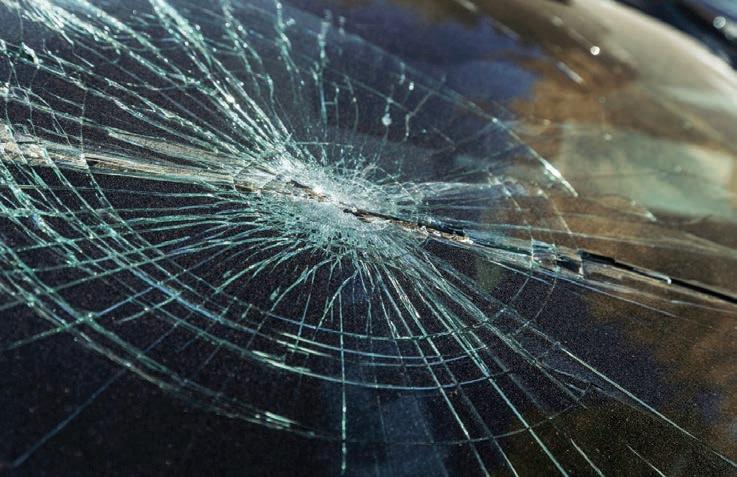
NHTSA Deputy Administrator Sophie Shulman says pedestrian fatalities between 2013 and 2022 rose 57 per
New vehicle technology and active campaigns to make elements compulsory may be having an incremental effect on the US crash toll.
In the first half of 2024 the number of road fatalities declined by 3.2 per cent compared to the same period in 2023, marking the ninth straight quarter of declines.
This is despite there being more cars and miles travelled on US roads the National Highway Traffic Safety Administration says.
In 2021, the US department of Transport adopted a road safety plan to bring the number of roadway deaths to zero and the NHTSA has been an active campaigner on several safety initiatives including compulsory braking and speed alert systems.
The National Highway Traffic Safety Administration estimates 18,720 people
died in motor vehicle traffic crashes in the first half of 2024, a decrease of about 3.2 per cent as compared to 19,330 fatalities projected to have occurred in the first half of 2023.
The decline occurs along with preliminary data reported by the Federal Highway Administration that show that vehicle miles travelled in the first half of 2024 increased by about 13.1 billion miles, or roughly 0.8 per cent higher than 2023. The fatality rate of 1.17 fatalities per 100 million VMT, down from the projected rate of 1.21 fatalities per 100 million VMT in the first half of 2023.
By way of comparison, Australia’s fatality rate per 100 million vehicle kilometres travelled (VKT) in 2022 was of 0.49 (0.78 translated into Vehicle Miles travelled) and was ranked 6th out of 11 nations with available data.
US Transportation Secretary Pete
“We have a crisis of roadway deaths, and it’s even worse among vulnerable road users like pedestrians,” she says. “This proposed rule will ensure that vehicles are designed to protect those inside and outside from serious injury or death.” Buttigieg said despite the drops, the overall proportions of this issue remain at crisis levels and there is much more work to do.
“Safety is at the core of our mission, and we are using funds from the Biden-Harris infrastructure package to deliver lifesaving resources to communities across the country so that roads become safer for everyone.”
Since January 2021, NHTSA has undertaken several safety initiatives aimed at reducing traffic deaths, such as a new requirement for passenger cars and light trucks to come equipped with automatic emergency braking systems by 2029. It has also looked at mandatory speed regulators along with a range of initiatives based around driver behaviour and road construction safety.
Vehicle to vehicle communication, including warnings about hazards or pedestrians a driver cannot even see, is the next phase of automotive technology just around the corner.
With real-life demonstrations in Sydney of the newest vehicular technologies, Lexus vehicles has highlighted advanced warning systems that extend the limit of current line-ofsight systems.
Demonstrations showed advanced infrastructure-to-vehicle communication where it can warn drivers of unsighted pedestrians approaching from around a corner.
Vehicle-to-vehicle communications were demonstrated via awareness messages warning drivers of an unsighted vehicle approaching from a perpendicular direction.
The demonstrations were part of the Intelligent Transport System (ITS) Australia Summit 2024 that brought together more than 800 delegates from government, industry and research organisations.
Lexus provided three of their latest vehicles for the demonstrations, including two of their RZ 450e BEVs and one RX 500h F Sport Performance.
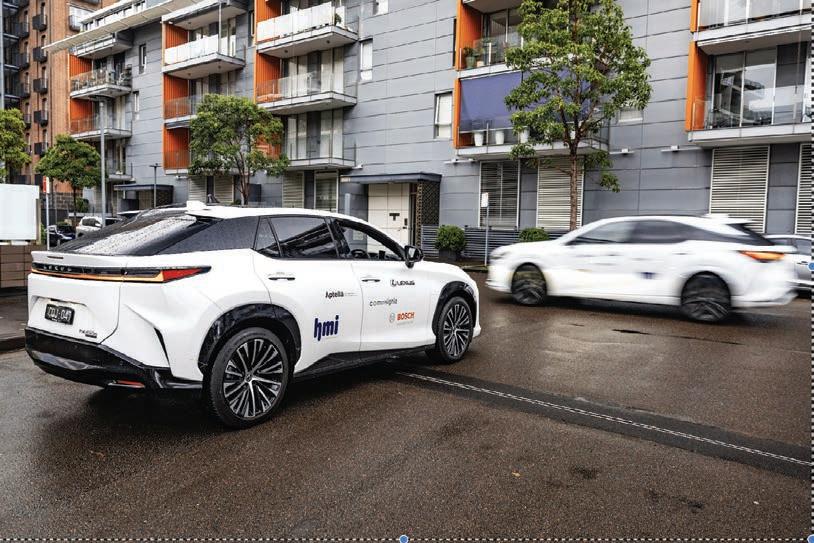
Intelligent Transport Systems, (C-ITS) presented over 150 demonstrations at the summit.
The technology can warn drivers of accidents ahead of time, as well as unsighted road works, traffic congestion, and pending changes to speed limits.
The communication strategies between vehicles and infrastructure is through Dedicated Short-Range Communication (DSRC), with drivers in the specially fitted Lexus vehicles warned by visual and audible alerts.
One historic OEM leaves and another arrives, in the continually unfolding makeup of the Australian car parc.
In yet another sign that repairers will have to be flexible in the cars they see rolling though their doors, there was major news last month announcing French OEM Citroen would exit Australia after a century. Meanwhile more new EV brands are arriving.
Inchcape, the distribution partner for Citroën in Australia told media the brand will cease sales operations from
1 November 2024, 104 years since it first began its presence in Australia including a stint at manufacturing.
“The Citroën 5CV enjoys the storied history of being the very first vehicle to completely circumvent Australia in 1925 and is proudly displayed in the National Australian Museum,” the website notes.
FCAI figures indicate new-car sales for the first half of 2024 were low and have been dropping over the last year.
It comes as news of Cadillac, the luxury arm of US company General
ITS was aimed at the goal of zero road deaths.
“Intelligent perception technology can also improve traffic flow which reduces fuel consumption and therefore harmful CO2 tailpipe emissions,” Pappas says.
“We will continue to work closely with all government, industry and technology stakeholders to demonstrate how perception technology can enhance social, environmental and economic wellbeing for all Australian road users.”
Motors, is set to launch in Australia with announcements about its new centre in Rosebery Engine Yards in inner Sydney.
Cadillac is reported to be planning a range that is electric-only and aimed at the luxury EV market now occupied in Australia by high-end European brands BMW, Audi and Mercedes-Benz.
This also comes as China gears itself up to be a major exporter of EVs to Australia, with established brands like BYD, Chery and GWM.

The race to capture the attention for the next generation of automotive industry recruits is on and one OEM has got off to a good start with its apprenticeship program in Victoria.
About 40 young people gained an introduction to Nissan’s NISSMAP (Nissan Mentored Apprenticeship Program) at their Mulgrave headquarters to gain an insight into potential careers in the industry.
The program that the OEM launched in 2011 and has since seen some 600 young people complete an automotive technician apprenticeship through Nissan’s national service centre network – the fifth-largest dealer network in Australia.
Recent figures indicate there may be a shortfall of 40,000 workers in the automotive industry including general service, collision repair and other skills areas of the aftermarket.
Groups like the Australian Collision Industry Alliance have been set up to directly tackle the skills shortage in the
collision repair industry and have been actively lobbying and appearing at careers events to change perceptions in young people about careers in automotive.
This includes generating 15 active ‘leads’ from potential future recruits at recent careers days in Queensland and Perth.
The MTA SA/NT was also promoting an attendance of more than 400 interested students at a two day automotive trade insight in August, highlighting the competition atmosphere aiming to secure the best in future talent.
Part of the NISSMAP program is about exposing the potential recruits to modern and innovative technology as exemplified by the Nissan vehicles, like the Nissan GT-R, Nissan Z and Nissan LEAF.
Nissan claims the NISSMAP retention rate is almost double the industry average of 49 per cent, with 87 per cent of participants retained in the industry.
Ninety per cent of participants qualify in just two years and eight months, compared to the usual four years, utilising fast-tracking of skills and competencies.
Nissan National Manager Dealer Training Alisha Gray says the success rate highlights its value.
“The award-winning NISSMAP program was started with a simple goal – to provide young women and men across Australia with the support, mentoring and skills they need to embark on an exciting career in the automotive industry,” Gray says.
“In the 11 years since launch it has achieved that and so much more, reporting incredible qualification and staff retention rates, and creating a new generation of enthused and engaged automotive technicians.”
The NISSMAP program operates in Victoria, NSW, QLD and WA, and an expansion into South Australia is expected over the next 12 months.
Nissan have announced its development and mass production of in-vehicle, lithium-iron-phosphate as it pushes into alternative battery development. The batteries project has been certified in Japan by the Ministry of Economy, Trade and Industry.
The announcement follows numerous Chinese electric vehicle manufacturers’ support for the use of LFP batteries.
Through the development and mass-production of LFP batteries,
Nissan intends to establish a base in Japan by strengthening the supply chain of storage batteries, a Japanese government policy, and promoting the use of electric vehicles fitted with LFP batteries.
Nissan president and CEO Makoto Uchida outlined the need to provide more affordable electric vehicles with the adoption of LFP batteries.
“The batteries, to be developed and mass-produced in Japan, will be installed in electric mini-vehicles starting
in fiscal year 2028,” Uchida says.
“We aim to establish a base for LFP batteries in Japan by making the most of the government support approved by METI.”
China currently produces the vast majority of lithium-ion phosphate batteries which are in increasing demand in automotive applications due to their higher output, lower costs, safety and longer-life cycles than normal lithium ion batteries using cobalt.
A pioneer in urban mobility is the latest part of a wave of new Chinese-made vehicles to come to Australia that look set to increasingly change the look of the Australian fleet.
smart, originally known for its twoseater mini cars, has launched two new all-electric vehicles the smart #1 urban SUV, smart #3 and smart #5.
The smart brand was a subsidiary of Mercedes- Benz and still works with the prestige German company for its design but the cars are made under the Geely banner. It launched its first EV test programme more than 15 years ago in Europe and was the first established automotive marque to complete the transition from internal combustion to fully electric power in 2019.
Now it is offering larger SUV sized passenger cars that are proving amongst the biggest sellers in Australia.
The launch of smart in Australia is also part of a wider trend signalled by the new Vehicle Efficiency Standard where the Australian market will open up to more low-emission brands. China is currently the third largest country of origin for new vehicles including Tesla.
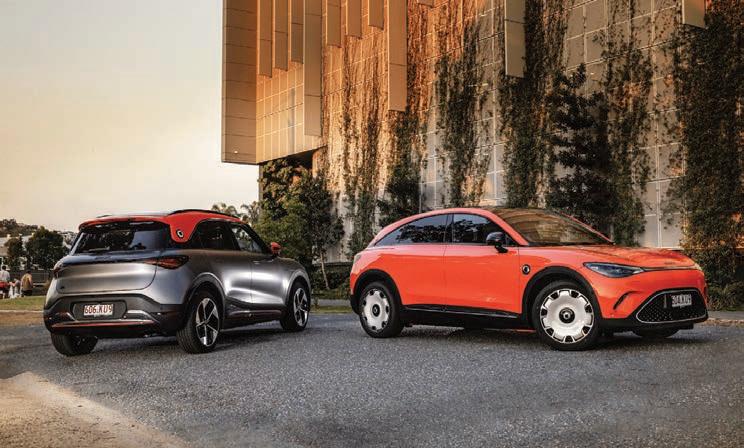
take a different design direction to that of the diminutive city cars for which the brand was known, expanding smart’s appeal and broadening its audience,” the company said.
The smart cars, though aimed at its speciality market of urban travel, have ranges claimed to be from 420 to 435km and range in price from $55,00 to $70,000 for premium models.
the best of German design and Chinese technology.
The China Automotive Engineering Research Institute in Chongqing features the country’s most advanced automobile aerodynamics testing centre, smart said in a product release statement.
“Here, the smart #1 measured a drag coefficient performance of just 0.29, a high achievement, especially when compared side-by-side with SUV segment competitors. The drag coefficient is the core factor influencing a vehicle’s energy consumption, range, wind noise and stability at high speed.”
Zeekr have previewed their Zeekr X, a compact lifestyle vehicle designed for urban environments, and will be the first of two models introduced to the Australian market this year.
The global premium electric mobility brand will follow this model with Zeekr 009, a pure-electric luxury MPV, by the end of 2024.
Zeekr has established a subsidiary in the country and will adopt a franchise dealership distribution model to provide their customer experience to Australian customers.
In the next 12 months alone, there are seven Chinese brands expected to start selling cars in Australia alongside Zeekr including JAC Motors,
The smart #1 delivers peak power of 200 kW, and an AC charge of 10-80 per cent at 22 kW in 3 hours or with DC superfast charging, in less than 30 minutes. The makers claim they have Xpeng, Leapmotor, Skywell, Jaecoo, and smart. They will join alreadyestablished brands, such as Chery, LDV, GWM, Haval, and BYD.
Zeekr announced it had developed upgraded EV batteries that support 5.5C ultra-fast charging, allowing vehicles to charge from 10 per cent to 80 per cent in just 10.5 minutes, it claims.
Zeekr claimed the rate as a new charging speed record and was achieved with Zeekr’s new 007 sedan model using lithium iron phosphate (LFP) batteries and connected with Zeekr V3 ultra-fast charging piles.
“Zeekr’s expansion into the Australian market brings our
innovative and cutting-edge electric vehicles to a new audience, offering a unique driving experience that blends style, performance, and sustainability,” Zeekr Australia managing director Connal Yan says.
Zeekr is the luxury electric vehicle brand from Geely Holding Group, the global mobility company headquartered in Zhejiang, China.
Geely Holding, owns and manages a portfolio of brands including Geely Auto, Lynk & Co, Zeekr, Volvo Cars, Polestar, Lotus Cars, London Electric Vehicle Company, Cao Cao Mobility, and aerospace technology company Geespace.
Two of the largest players in automotive manufacturing will push ahead with investment in hydrogen, hoping to make the alternative fuel
options to customers and bring a new powertrain technology game with the advancement of the hydrogen.
The OEMs see hydrogen is seen as
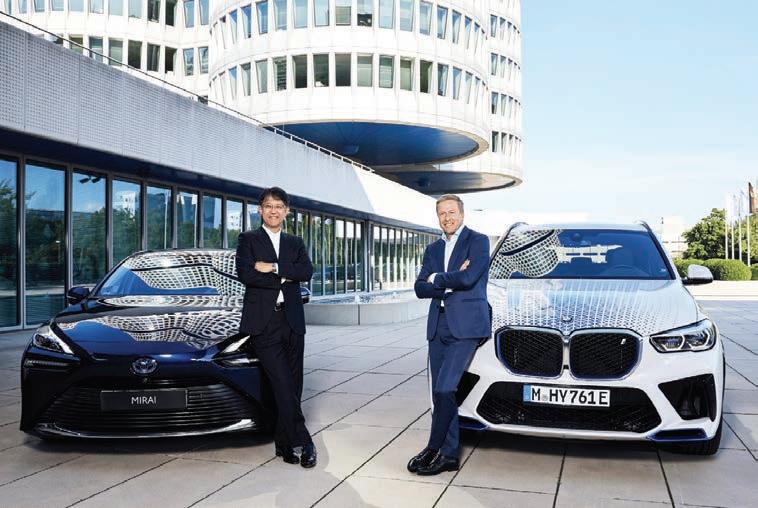
Major Asian OEM Hyundai has updated its future alternative energy strategy and is aiming to introduce hybrids with range extenders that can reach 900km on a single charge.
In an announcement that recommitted to its Hyundai Way strategy from 2023, it has also refocussed on hybrids and will double its range of models to 14 to take advantage of current market trends.
But it still aims to sell two million EVs per year globally by 2030 along with being a major supplier of autonomous vehicles to software companies.
Hyundai is aiming to offer a full lineup of 21 EV models by 2030, ranging from affordable to luxury and highperformance including a new EREV
models, with a range of more than 900 km on a single charge, that it plans to introduce in North America and China.
It will also invest in battery technology internalisation and developing affordable NCM batteries and strengthen hydrogen technology capabilities across the value chain It aims to have the new long-range hybrid EREV manufactured within two years and on the road in the US by 2027.
The EREV uses a petrol engine to recharge the battery rather than as part of the drive change, distinguishing it from a normal hybrid where the ICE engine serves both purposes.
“In response to the recent slowdown in EV demand, Hyundai Motor is
more stable and reliable integration of renewables into the energy grid.
However, It is unlikely collision repairers will see hydrogen vehicles rolling into their workshops en masse soon with the power source still in its infancy in Australia. FCAI figures show of the 830,000 new vehicles sold in 2024 so far, only nine have been hydrogen powered.
In a statement both BMW and Toyota say they share the aspiration in bringing hydrogen mobility one step closer to a consistent reality.
The companies plan to maintain their distinct brand identities, but expand the range of FCEV options. After testing the BMW iX5 Hydrogen pilot fleet worldwide, the BMW group is preparing for a series production of FCEV vehicles, with production models integrated into their preexisting portfolio.
developing a new EREV under its Hyundai Dynamic Capabilities strategy,” a statement read.
“The new EREV will combine the advantages of internal combustion engines (ICE) and EVs. Hyundai Motor has developed a unique new powertrain and power electronics system to enable four-wheel drive with the application of two motors. The operation is powered solely by electricity, similar to EVs, with the engine being used only for battery charging.”
President and CEO of Hyundai Motor Company Jaehoon Chang said the company was adapting to ensure it was a market leader in future mobility.
with Cliff Chambers
The Japanese motor industry discovered very quickly that building cars which embodied enjoyment, was a good way to become established in the global vehicle market.
Japan began its two -door revolution with some tiny and quite quirky models including the Mazda 360 coupe and Honda S500. Sophistication came quickly though, with Mazda in 1967, building the company’s first production car with a rotary engine – the Cosmo 110S coupe – and Toyota its stunning but short-lived 2000GT.
Nissan with its Z Cars, Mazda the RX7, Toyota’s Celica and Honda with the Prelude eventually exerted a stranglehold on the global two-door market, which has continued into the 21st century.
Collectively the Japanese would dominate the Sports category in the USA, effectively wiping out British and European rivals. Today, US buyers who missed out on very early product can be seen stalking the Japanese domestic market in search of early rotary Mazdas and Nissan Zs that
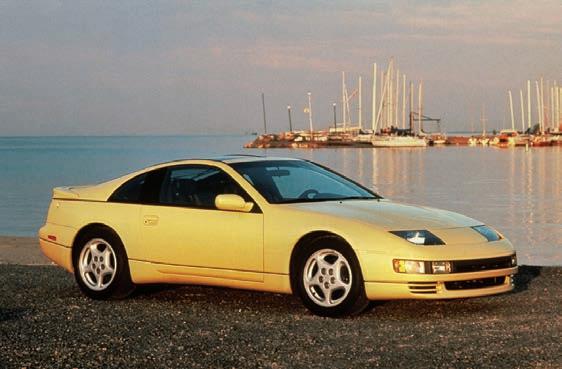
have remained undiscovered.
Our quest is to delve into the segment as it exists in Australia and find cars that will typically sell in good condition for less than $30,000. Some could be priced well below this level, which encourages potential buyers to seek out the reasons why.
Some vendors might just be in a hurry, while others know their car suffers some serious problems which will dash hopes of a sale unless the price is low enough to accommodate significant repairs.
Nissan in 1984 reshaped its ZX Coupe into a bigger and more luxurious device, then waited another five years before taking the next step to serious performance.
Here in Australia, we didn’t see twin-turbo versions of the Z32 version as new cars. We had to wait five years until the first shipments of ‘grey import’ 300ZXs began appearing in specialist car yards, at prices pretty much line ball with locally sold non-turbo cars.
The differences in performance were spectacular. Even with fourspeed automatic transmission, the Z32 twin-turbo would match the acceleration of more powerful HSV Commodores.
No one is exactly sure how much power was extracted from the Z32 twin-turbo engine. Japanese convention required manufacturers to advertise output from their performance engines at no more than 208kW but some sources say 220- 230kW.
Thirty years have flown by since the arrival of those first low volume import Z32s, yet survivors in excellent condition remain remarkably easy to find and not expensive.
Unlike Toyota’s twin-turbo Supra, or Nissan’s own R32 GTR, Z32s haven’t generated any great following amongst younger enthusiasts and very good cars sell for less than they did in the 1990s.
Toyota’s Celica arrived in 1971 and enjoyed 15 years of undistinguished dalliance before someone decided that a turbo version with all-wheel drive would make a damned fine rally car.
Australia didn’t see the GT4 in its earliest ST165 form, except when they showed up as part of the international contingent to Rally Australia, taking first and second outright in 1989.
Some months later and following a model update, Australian enthusiasts did gain access to ST185R versions of the AWD Celica which with 153kW from its turbocharged 2.0-litre engine, five speed manual transmission, power windows and steering were bargains at less than $45,000.
The Celica was and remains a brilliant choice for anyone wanting a car that looks smart in the city but can be demonically fast over treacherous rural roads. The engines can be tweaked to deliver more power, but most who have driven street-spec GT4s with any intent seem satisfied with the factory’s take on grip vs grunt.
Local deliveries ended in 1992 but two years later, in ST205 guise, came a limited production Group A Rally version. These were available for just a few months during 1994 and cost more than $80,000 so aren’t anywhere near as available or affordable, as the earlier car.
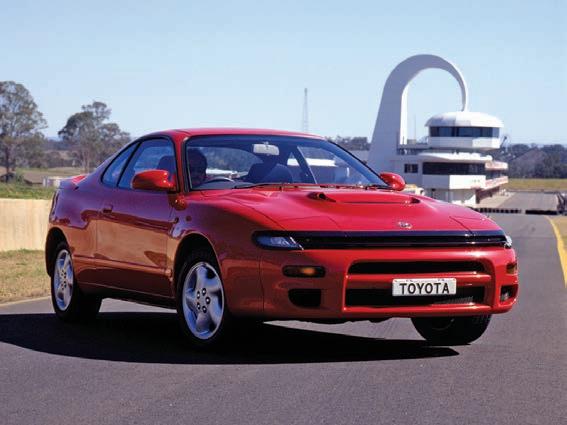
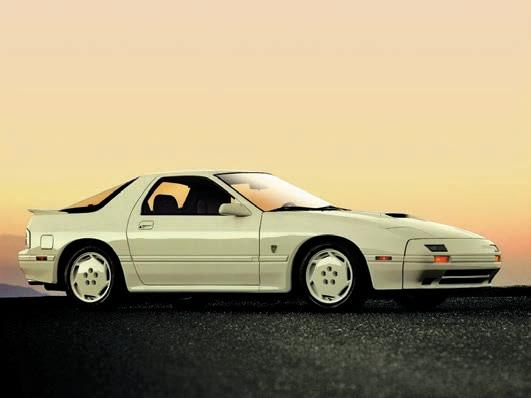
Initial Si releases had 96kW from 2.2 litres increasing to 118kW in the SRS (Four Wheel Steer) version.
Wait until 1994 though and the range was enlivened by a VTi-R version, with variable valve timing that made the car feel like it was turbocharged. As engine speeds rose past 4000rpm, the VVT system kicked in and power surged to 142kW. Early cars were five-speed manual, with optional automatic transmission arriving in 1997 with the Gen 5 update.
These included a restyle with bigger headlights and new nose.
A sliding sunroof was standard, as were 16-inch alloys. Mild engine changes for 1998 produced an extra 5kW.
Prelude suspension uses competition-style double wishbones with gas dampers and needs regular maintenance but delivers sharp handling while dealing easily with challenging road surfaces.
Many owners seem to have kept their VTi-R Preludes in quite remarkable condition and outstanding cars sell at $25-30,000. That still remains around $20,000 less than they cost new and ignores the many thousands that will have been spent maintaining a complex engine.
There wasn’t much doubt as to the source of its inspiration when Mazda in 1986 revealed its completely restyled Series 4 RX7.
Porsche’s 944 had emerged in 1982, right about the time Japan’s proponent of rotary performance was devising its next generation of RX7 and the result was remarkably similar.
Extra weight and more equipment required more power and ‘atmospheric’ versions of the 13B Series 4 (1308cc) twin-rotor engine with 110kW barely managed the task. Far better but more expensive was the 13B turbo, which ex-factory delivered 146kW and could be tweaked to produce considerably more.
The penalty, then as now, was fuel consumption. Tested in 1986, a Series 4 Turbo with five-speed manual transmission used an average of 16.1L/100km and could send that past 20L/100km when being pushed hard. Series 4 and 5 RX7s are pleasant cars to drive, with improved steering and way better oversteer management than earlier versions.
Features included power windows, mirrors and sunroof, airconditioning and cruise control. They did, in 1986, cost more than $45,000 though and only the very best Turbos will today sell for more than their original prices. One version we didn’t see new but which is available via the Low Volume Import market is the Series 4/5 convertible. At around $40,000 these cost marginally more than a Turbo coupe.
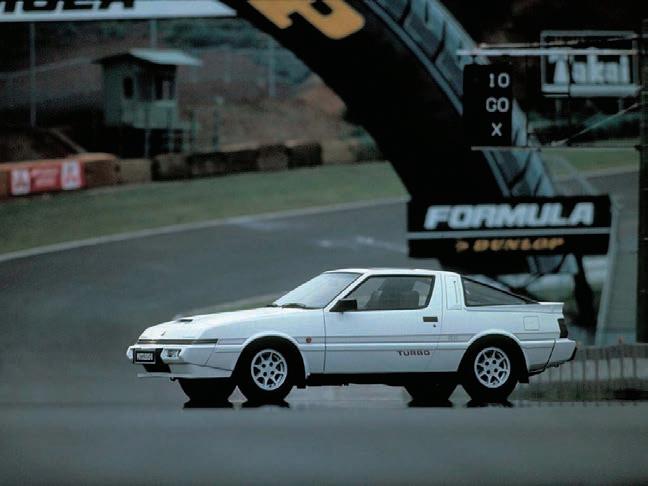

Just why Starions have failed to excite our market is a mystery.
Mitsubishi’s two door was arguably a better-looking car than Mazda’s Series 1-3 RX7, better appointed and with more power from its turbocharged engine.
That was just a starting point, with Starions demonstrating their prowess in rallying, Production Car and Touring Car race events here and in other countries.
The Starion at launch here in 1982 had 125kW from 2.0 litres, a five-speed gearbox and four-wheel disc brakes. Top speed was 218km/h, with 0-100km/h taking 7.6 seconds.
Starions weren’t expensive either, well not at first. Early cars were priced slightly above $20,000 - just $1800 more than an RX7 - but by late 1985 when the leaded fuel cars were being discontinued, the price had soared to almost $30,000 or $3000 more than an RX7 Limited.
Making things worse for Mitsubishi, the Starion engine didn’t take kindly to ULP (Unleaded) fuel and output from JD versions shrank to 110kW. That may have been countered to an extent when premium unleaded became generally available and allowed turbo boost to be increased.
Although rare in the Australian market, our Starions are generally cheaper than those remaining in Japan. Where a good local example can be bought at $3035,000, similar cars are being sold through Japanese auctions at A$25-30,000 then have the added costs of transport, local taxes and preparation for sale.

Cameras and sensors are part of a modern vehicle that repairers have to deal with and they look set to proliferate, new data shows.
GlobalData’s latest report found automotive cameras will become an increasingly critical component in modern vehicles across the Asia Pacific, a boosted market demand that is predicted to increase over the next five years.
In yet another signal of the importance of the repair industry being adequately trained and equipped to safely repair these vehicles, the “Global Sector Overview & Forecast: Automotive Cameras – Q2 2024” report found the market will increase at more than four per cent each year.
The leading data and analytics company found the rising adoption of advanced driver assistance systems and the focus in Asia on autonomous vehicles, will continue to drive the demand at a compound annual growth rate of 4.2 per cent from 2024 to 2029.
Electronic sensor demand will grow at the more modest 0.4 per cent over the same period to reach 5.1 million units by 2029.
GlobalData Automotive Analyst
Madhuchhanda Palit says the market for automotive cameras is estimated to grow from 262.4 million units in 2024 to reach 323.0 million units in 2029.
“To enhance driving safety, reduce accidents, optimize traffic flow, and increase convenience for drivers and passengers, advanced driving assistance systems are progressively gaining prevalence.
“ADAS components such as Automatic Emergency Braking, Adaptive Cruise Control, Lane Keeping Assist, and Blind Spot Detection, employ a network of cameras, sensors, and radars.
Consequently, the increasing demand for ADAS is driving the demand for automotive camera components.”
“Furthermore, the increasing adoption of autonomous vehicles is fuelling the demand for automotive cameras and sensors. For example, Nissan’s LEAF prototype self-driving car is equipped with an extensive sensor suite comprising 14 cameras, 10 radars, and 6 lidars.
“China is leading the charge in producing Level 3 autonomous vehicles, with an anticipated surge commencing in 2024, bolstered by government initiatives. This development has sparked a corresponding increase in sector innovations aimed at improving the precision and functionality of cameras.”
“To improve accuracy and road safety, innovations are being introduced within the sector, which are in different stages of adoption. For instance, vehicular vision is an innovation in the early stages of development and refers to the use of cameras and other imaging technologies in vehicles to improve safety and situational awareness for drivers and passengers. This includes cameras mounted inside and outside the vehicles, as well as image processing and data analysis techniques to identify objects, hazards, and other important information.”
GlobalData Senior Automotive Analyst Lucy Tripathi says government initiatives are crucial in encouraging sensor adoption, although the market is also being spurred by emerging middle classes in India and China and their automotive aspirations.
“In Japan, for instance, the government’s active promotion of
autonomous driving technology is spurring the demand for sensors in advanced driver assistance systems and autonomous vehicles,” she says.
Palit says leading tech companies are driving pace of change.
“For example, Valeo has developed a sophisticated smart front camera positioned behind the windshield. This camera is designed to effectively detect road lines, traffic signs, vehicles, bicycles, and pedestrians, thereby enhancing safety and functional capabilities on the road.
“Similarly, Bosch introduced the MPC3 multi-purpose camera, which is installed behind the windshield, between the headliner and rear-view mirror. This camera is specifically engineered to rapidly and reliably recognise the vehicle’s surroundings, offering potential benefits for autonomous driving applications,” Palit says.
“The increasing integration of advanced driving assistance features in vehicles, driven by government initiatives and heightened consumer awareness of road safety, has propelled manufacturers to equip their vehicles with enhanced safety features. This move helps in achieving superior safety ratings and subsequently bolster sales, thereby fuelling the demand for automotive cameras.
“Furthermore, with the projected uptick in production and adoption of autonomous vehicles, the automotive camera sector is expected to witness a surge in both scope and necessity for innovations to uphold road safety standards.”




SATA’s latest special edition, the SATAjet X 5500 Street Art, pays homage to the global movement that literally sees artists take their work to the street. Featuring creative and expressive street art images, it’s sure to make an eye-catching statement in any paint shop or on display in a collector’s display cabinet. Behind the vibrant graphics, you will find all the high value features of the regular SATAjet X 5500, including the unique X-Nozzle System.
Stock is strictly limited so to avoid missing out speak to your SATA distributor, across Australia and New Zealand, for more information.
Follow us online!
PPG Refinish Australia & New Zealand

